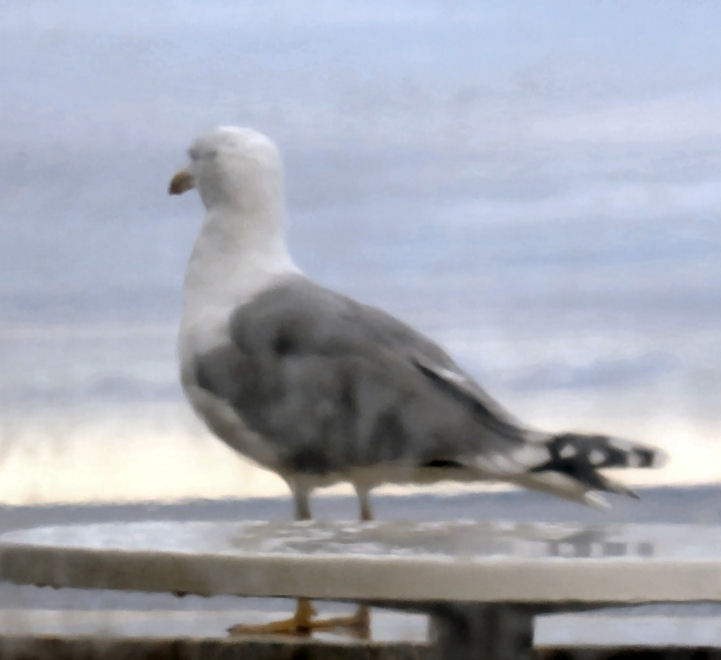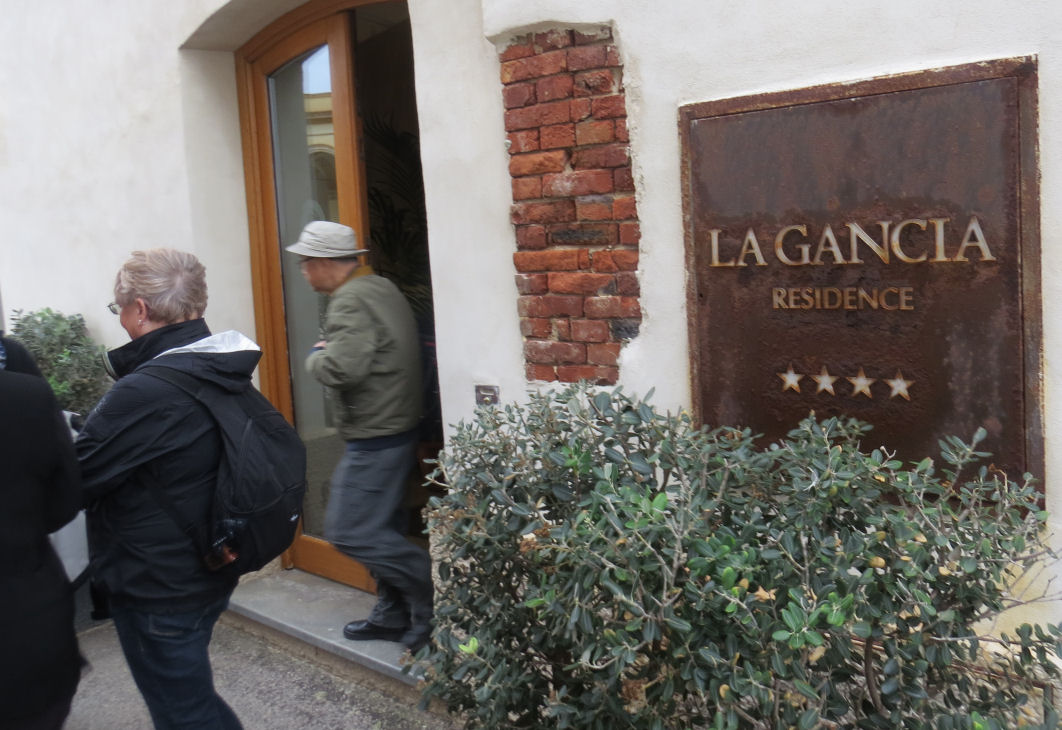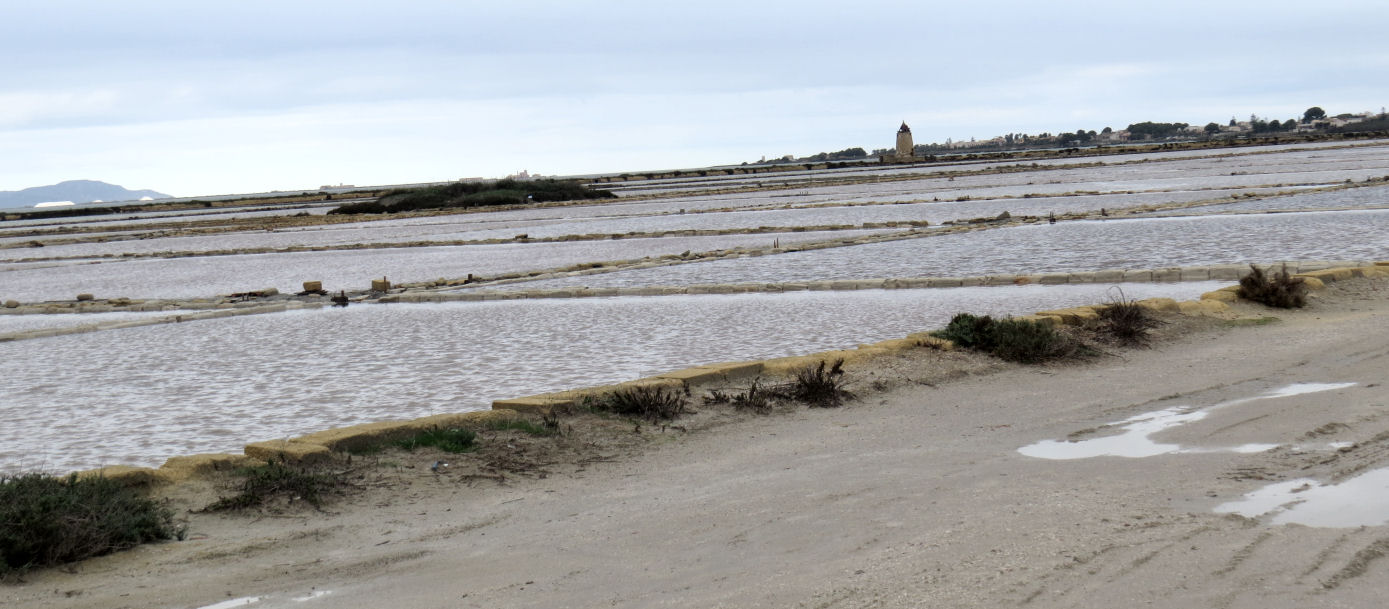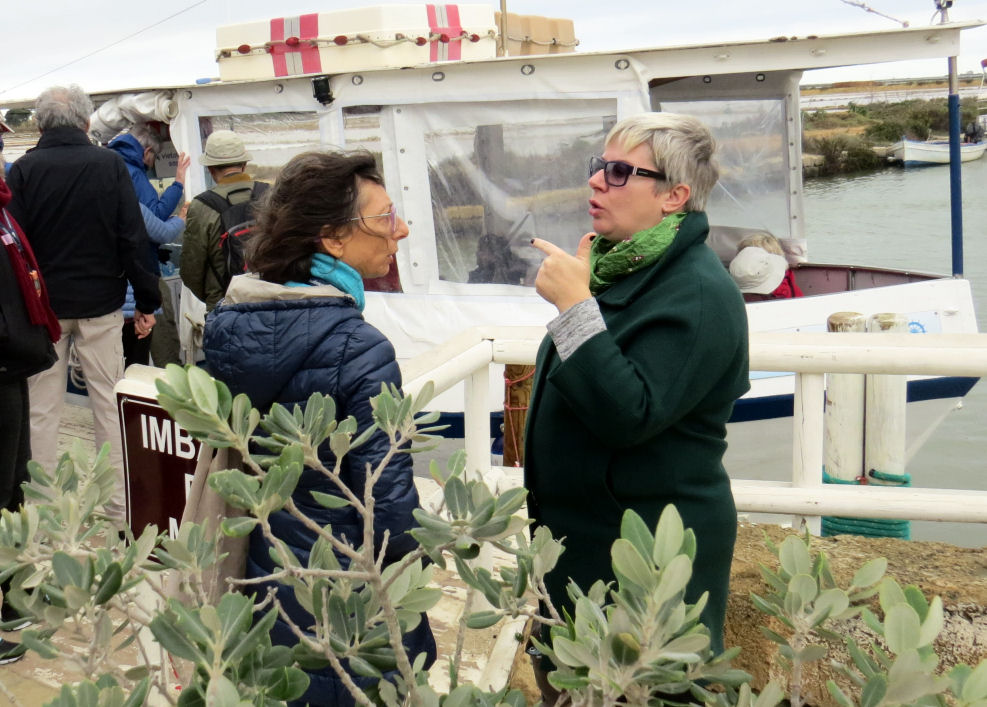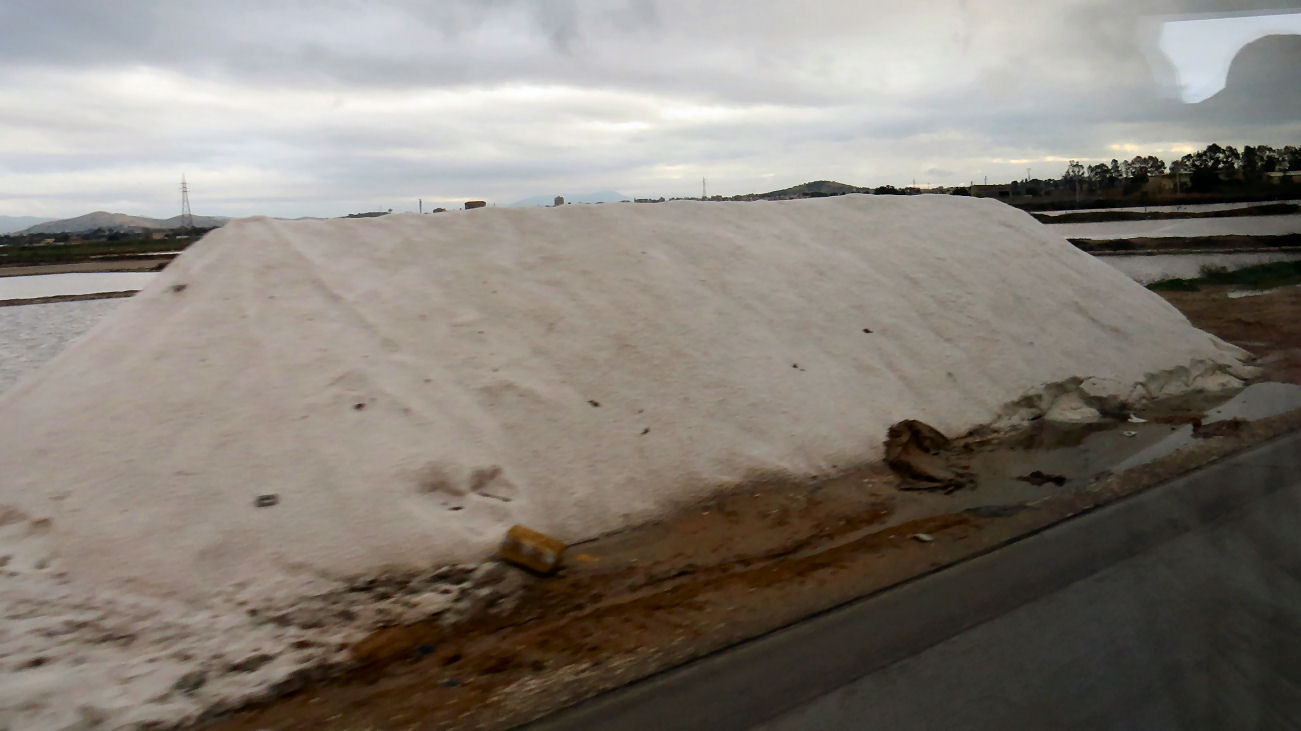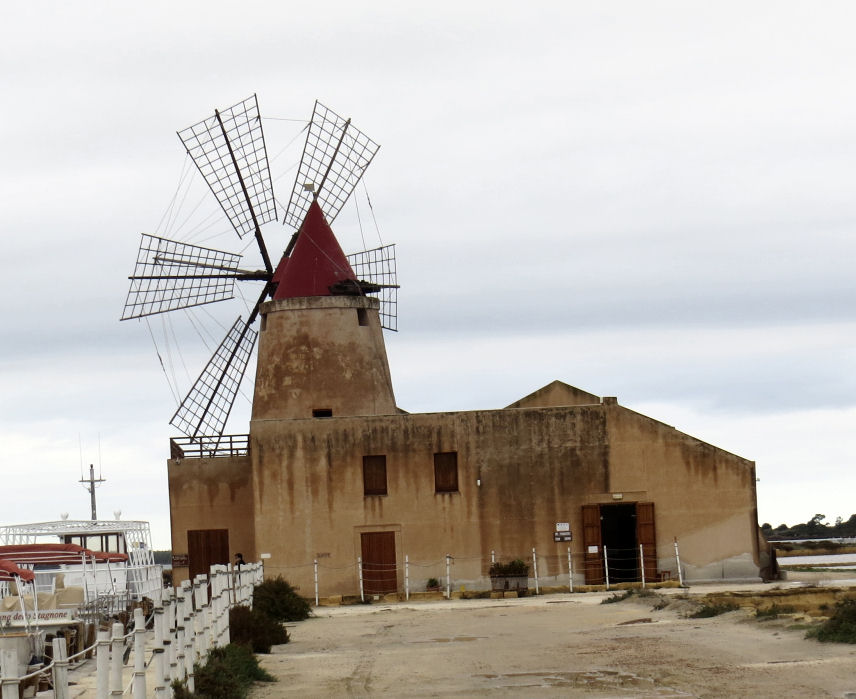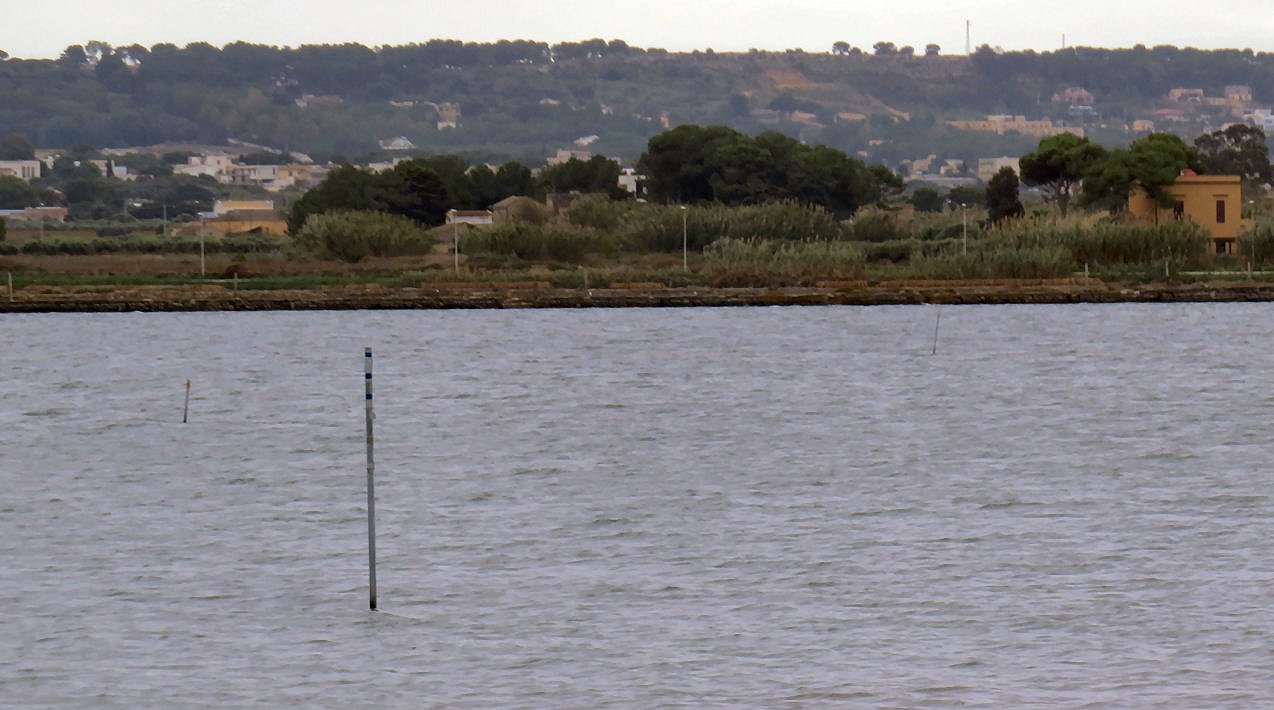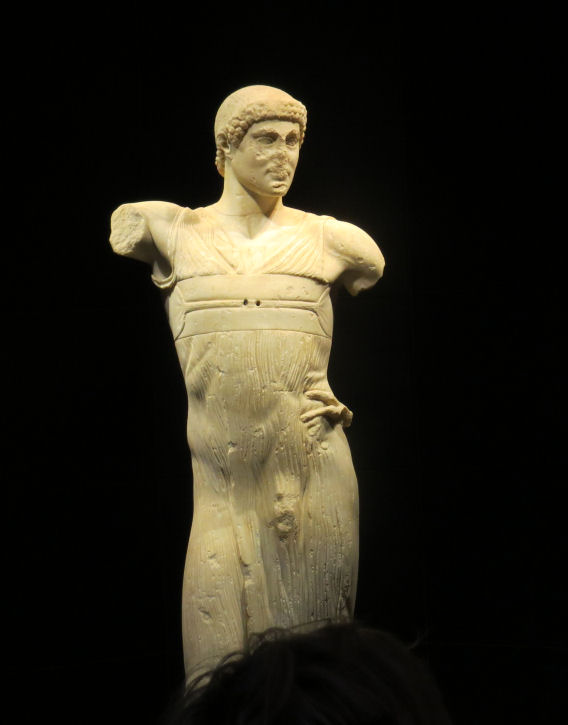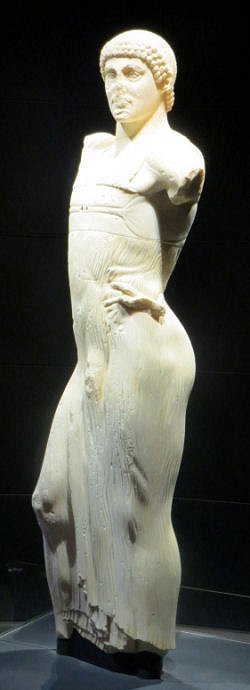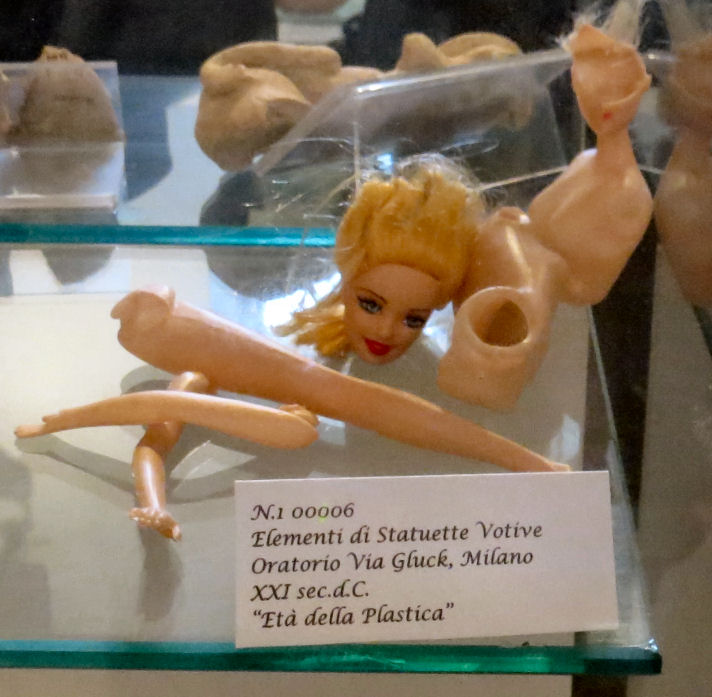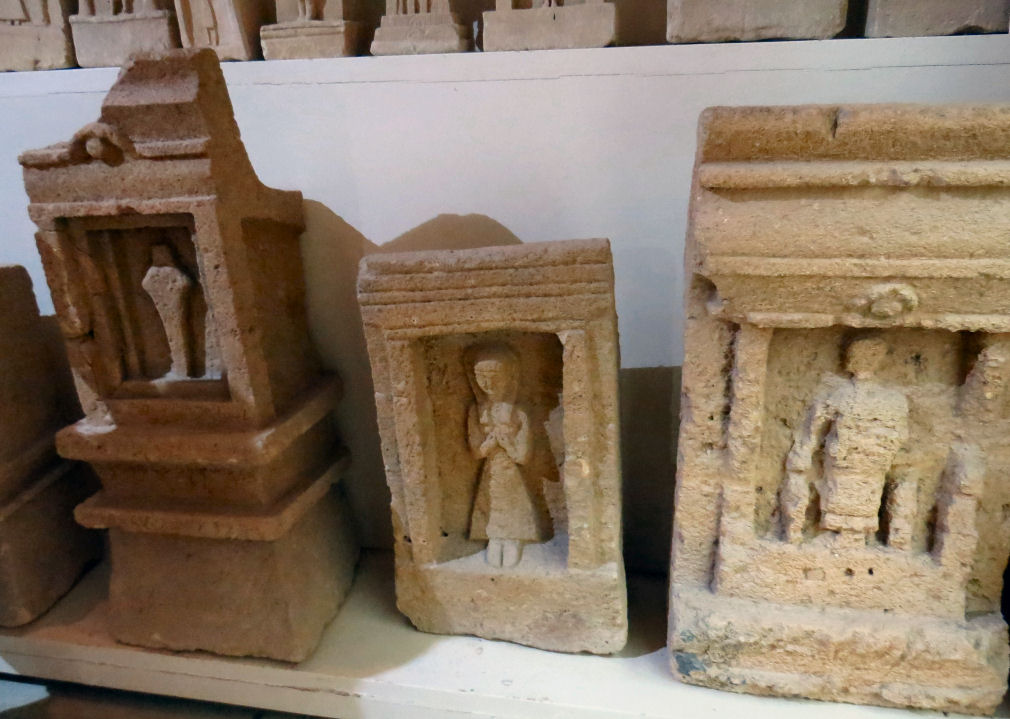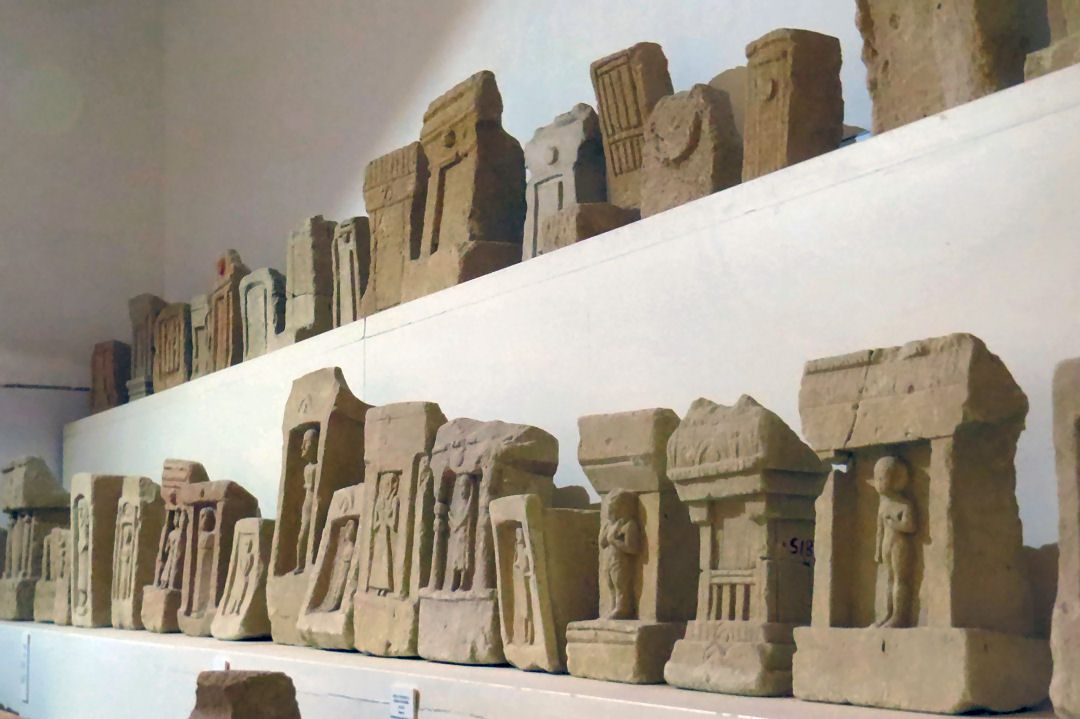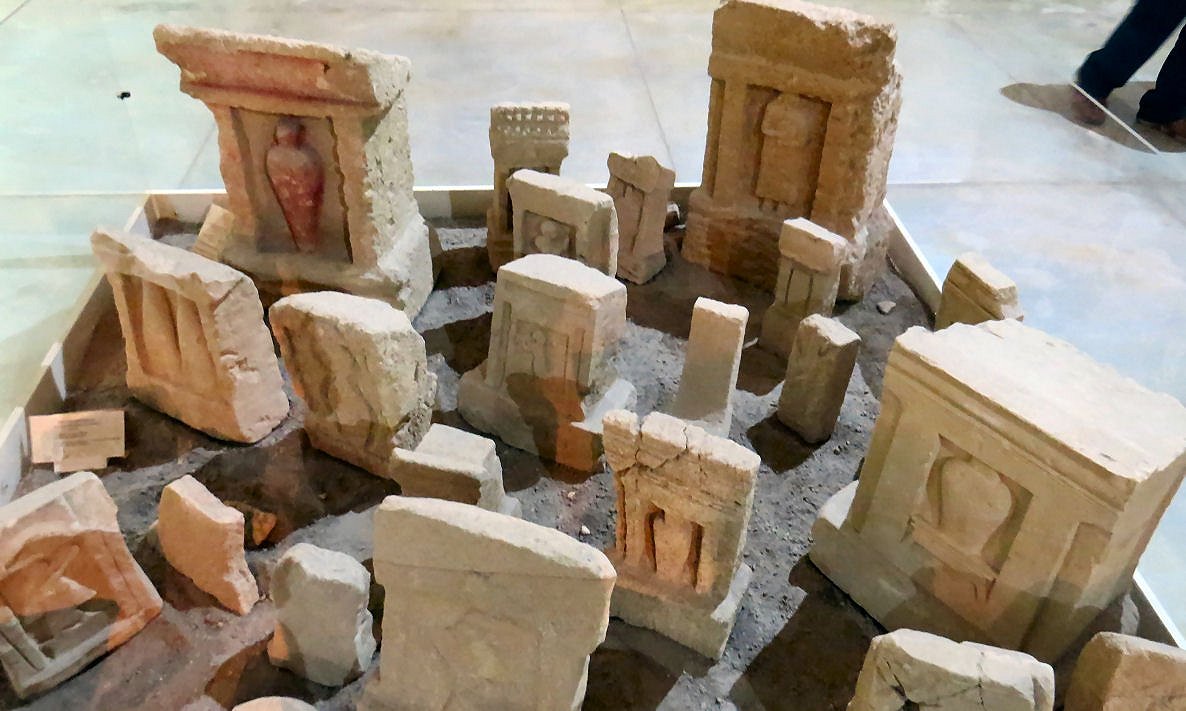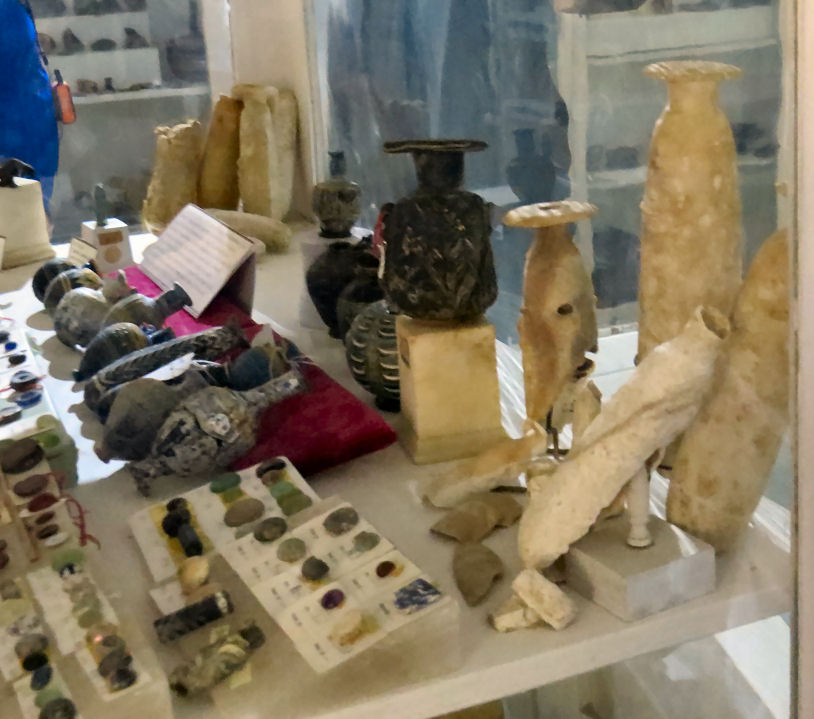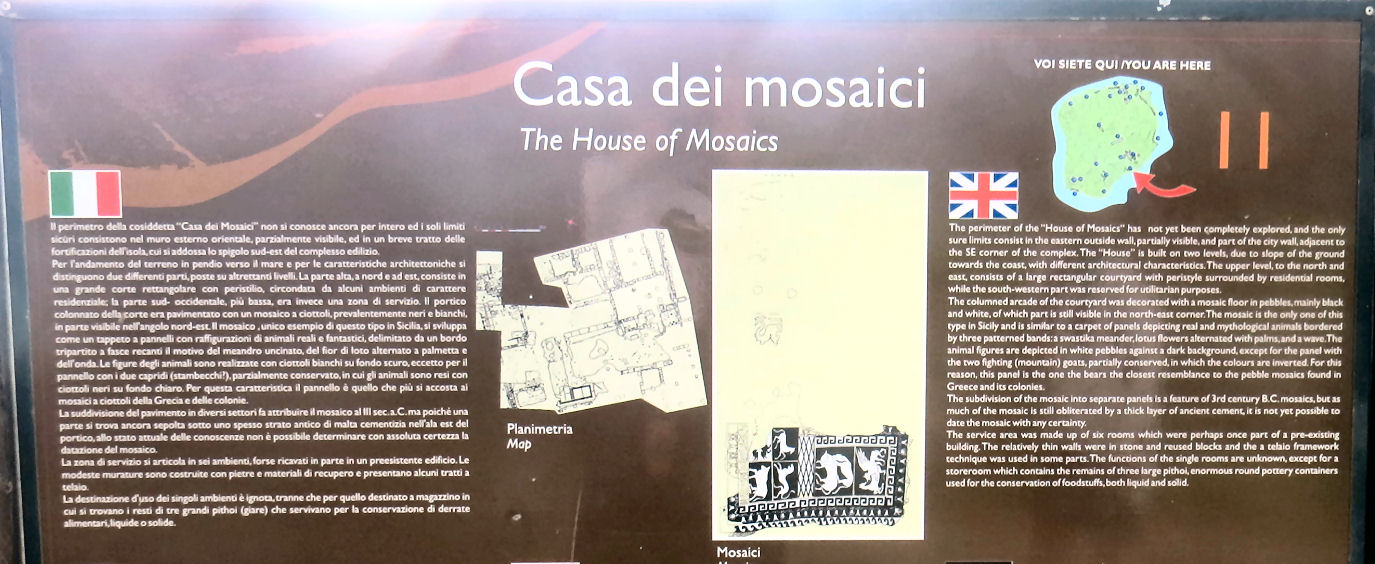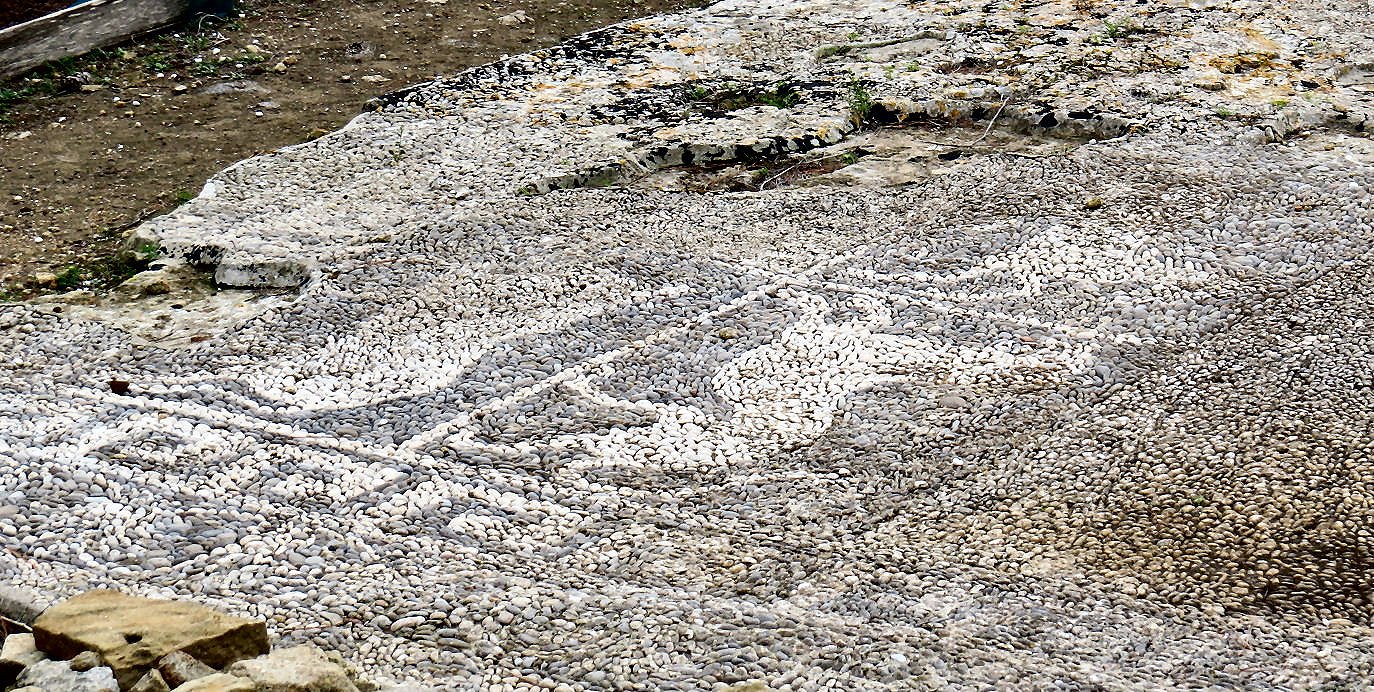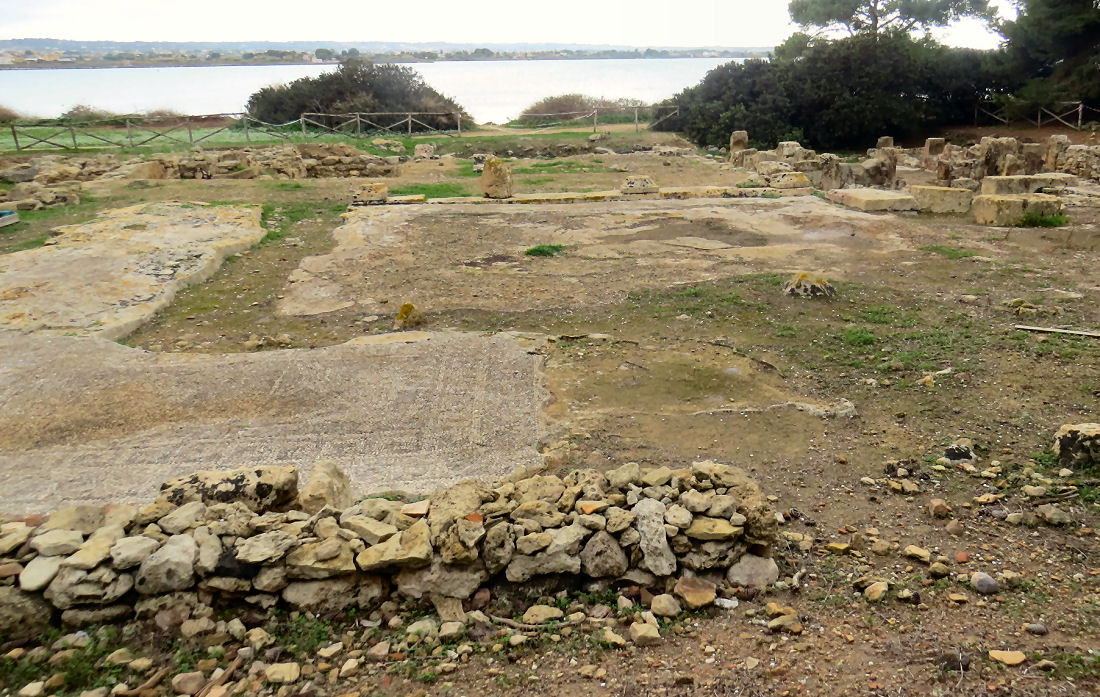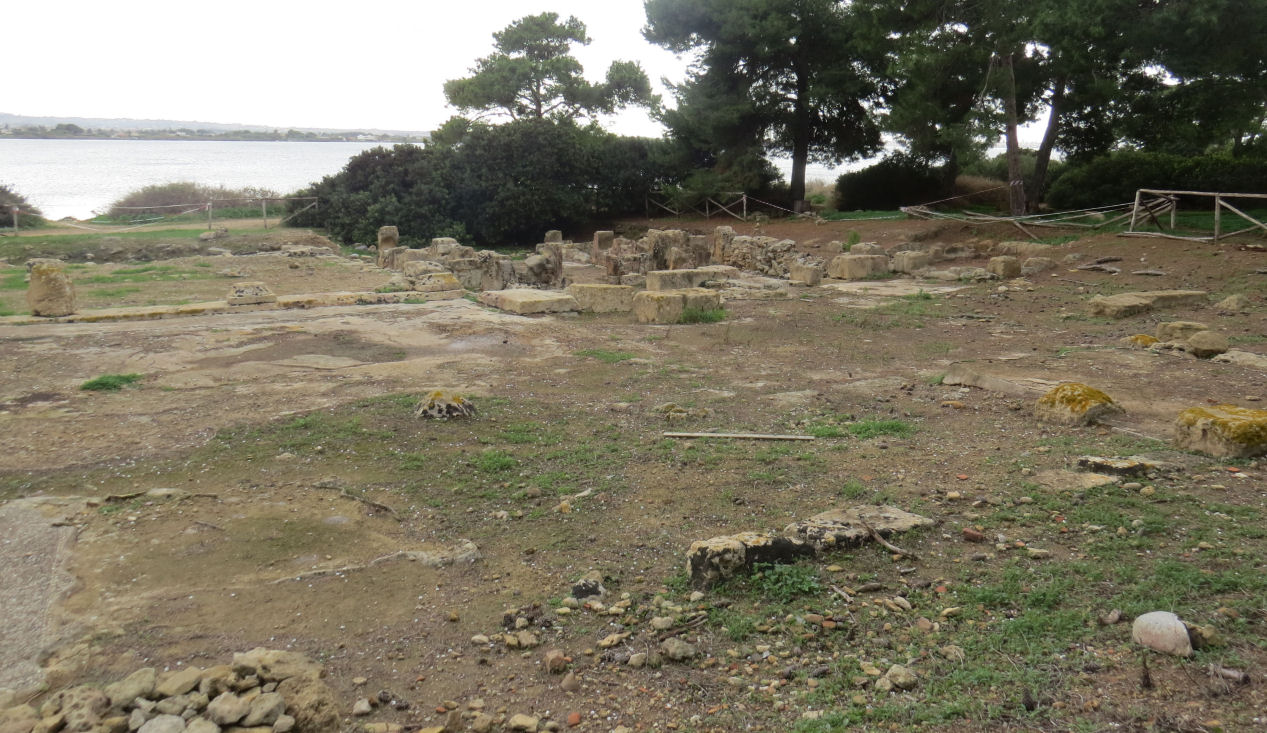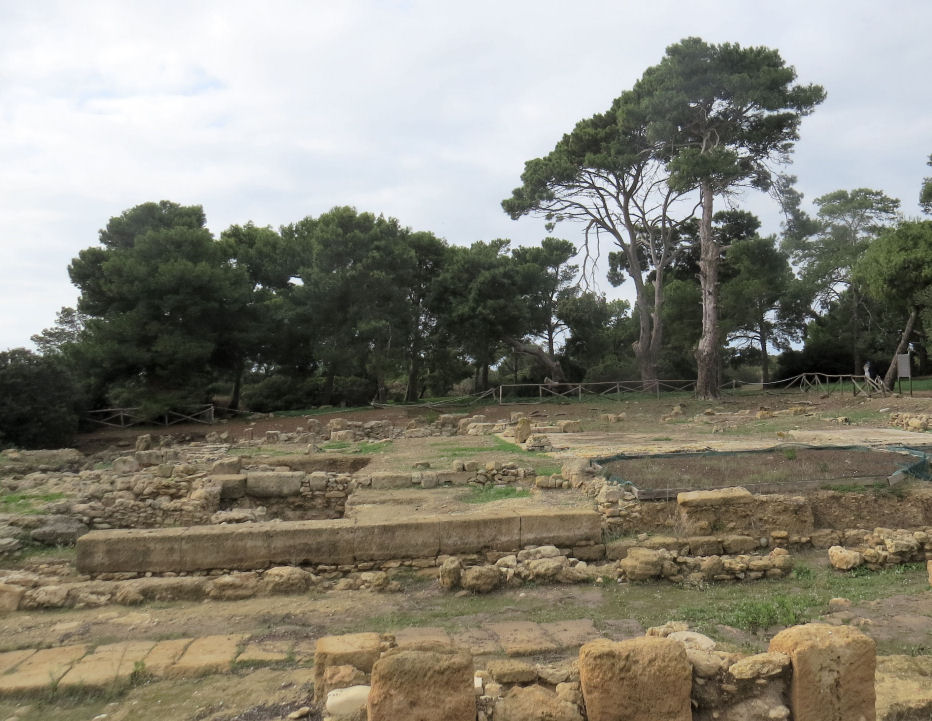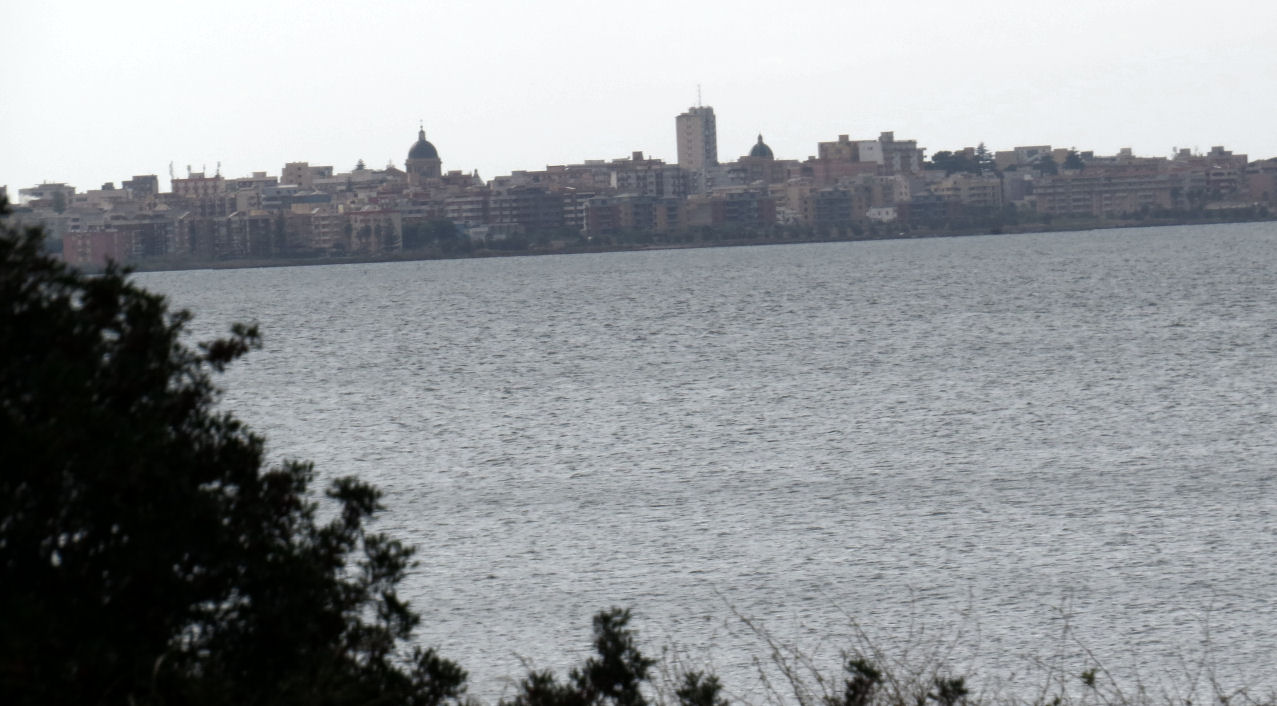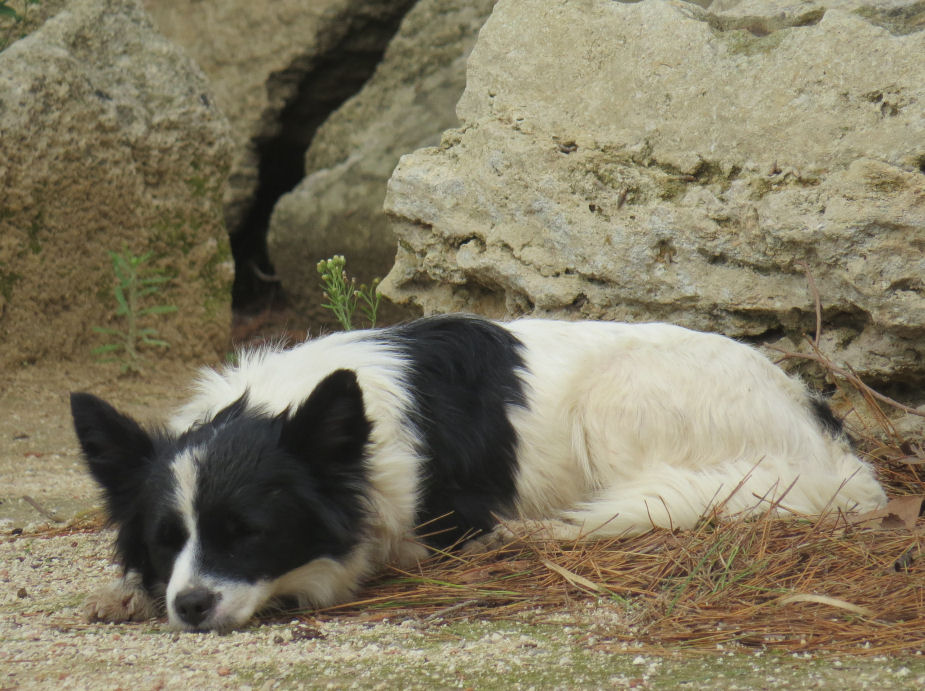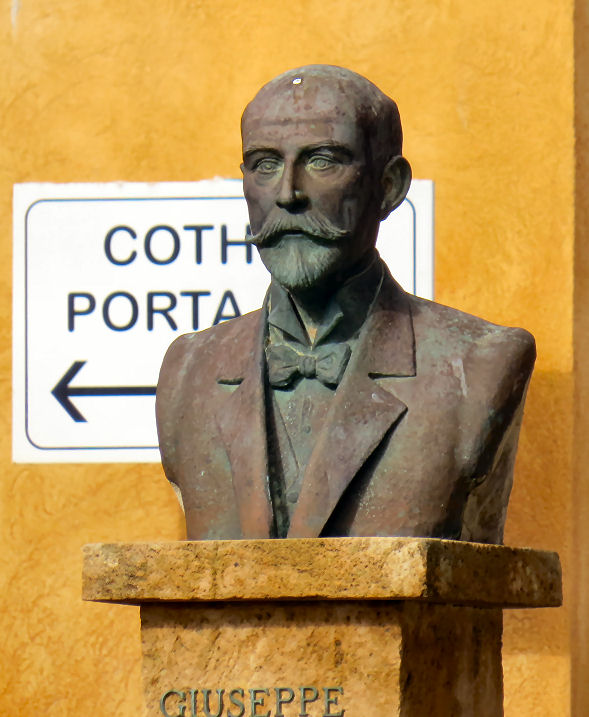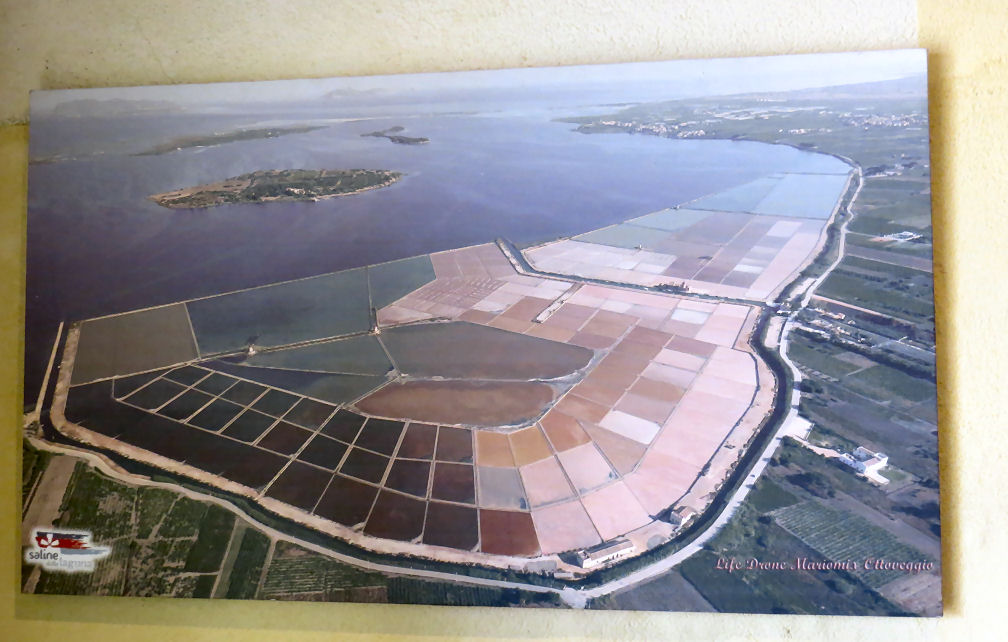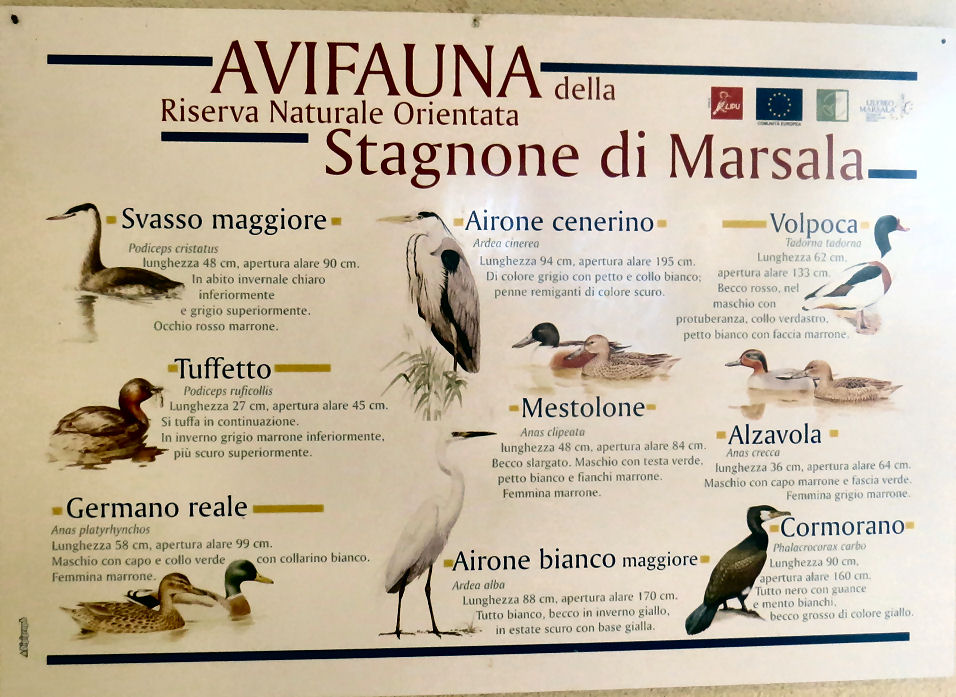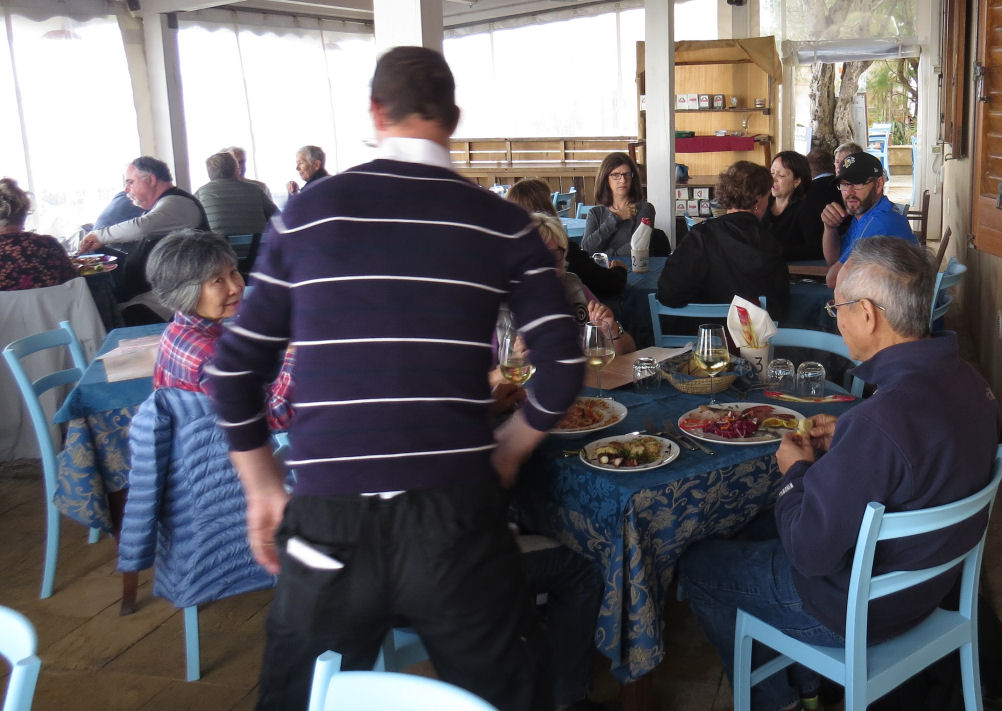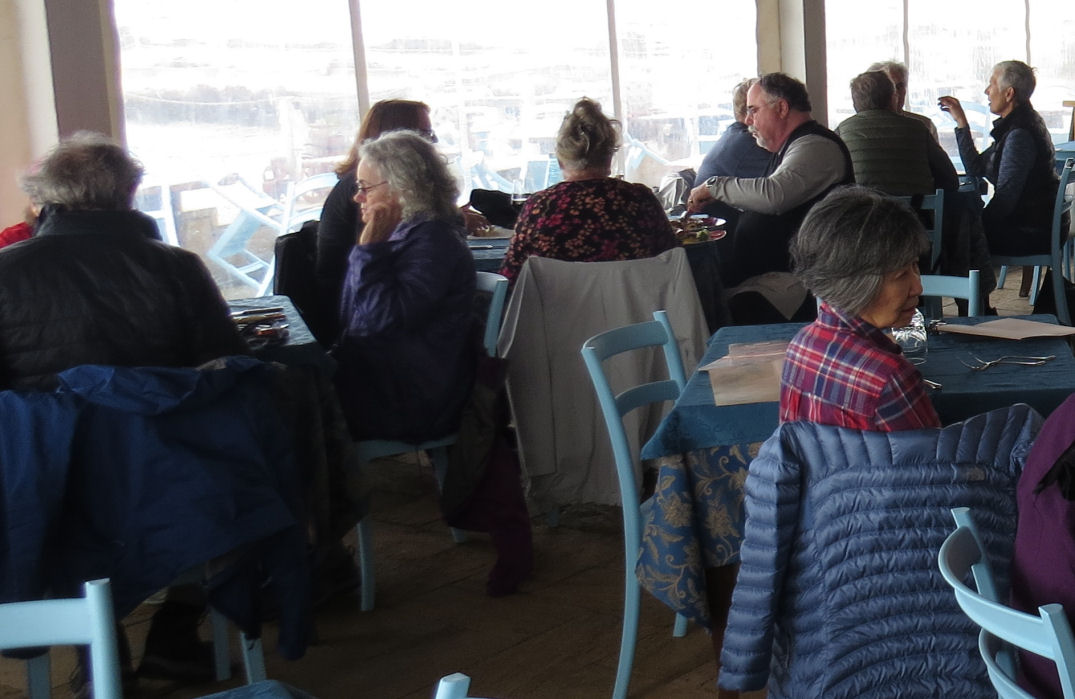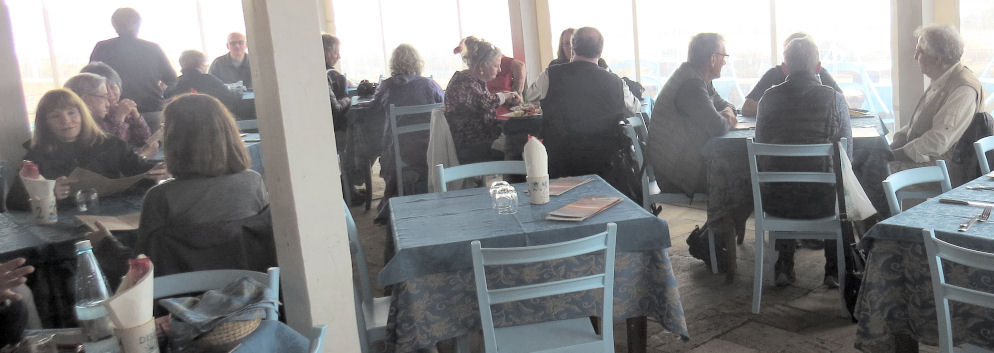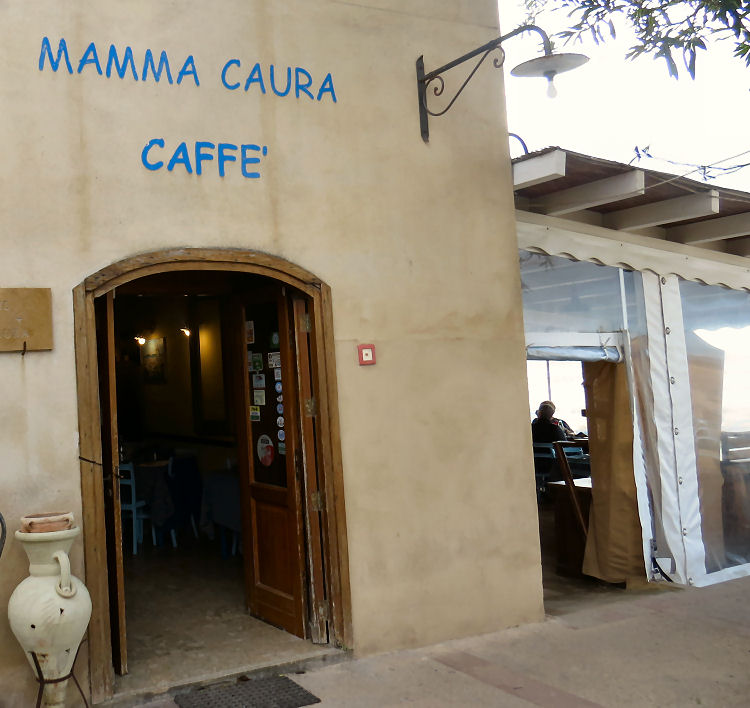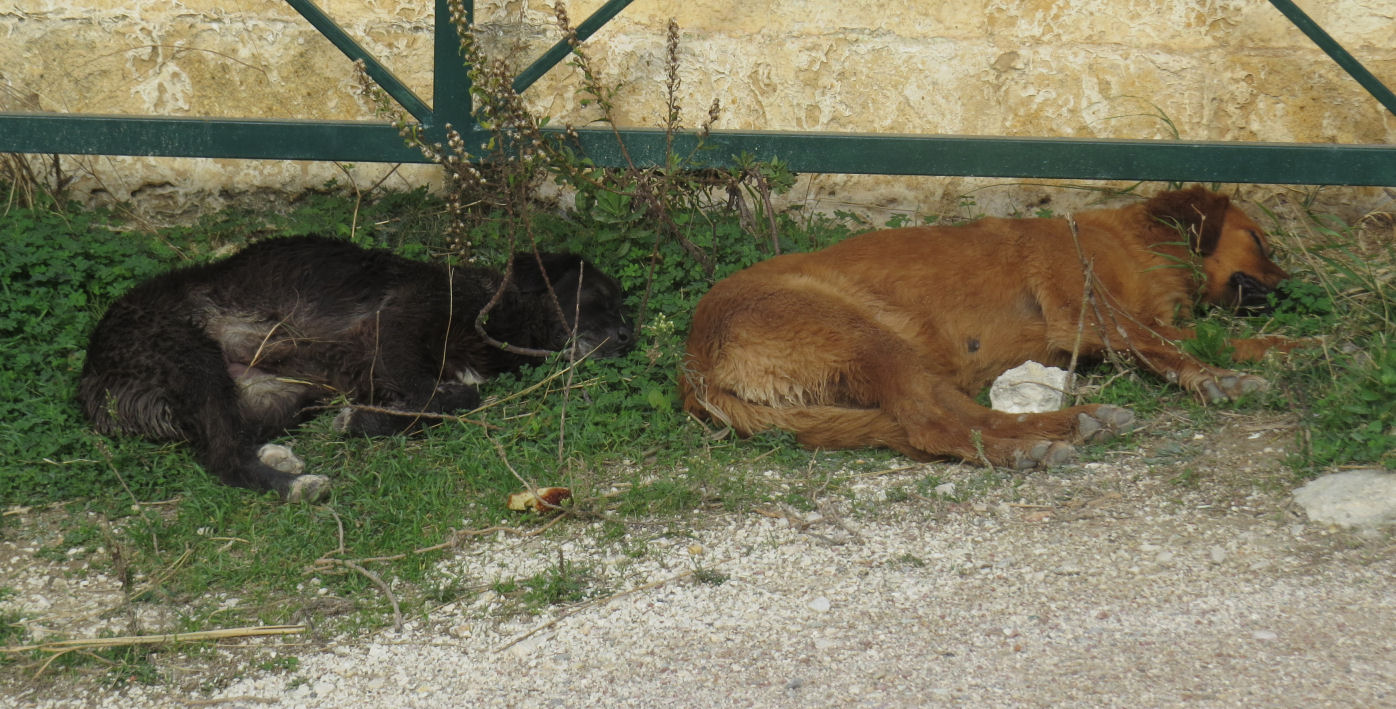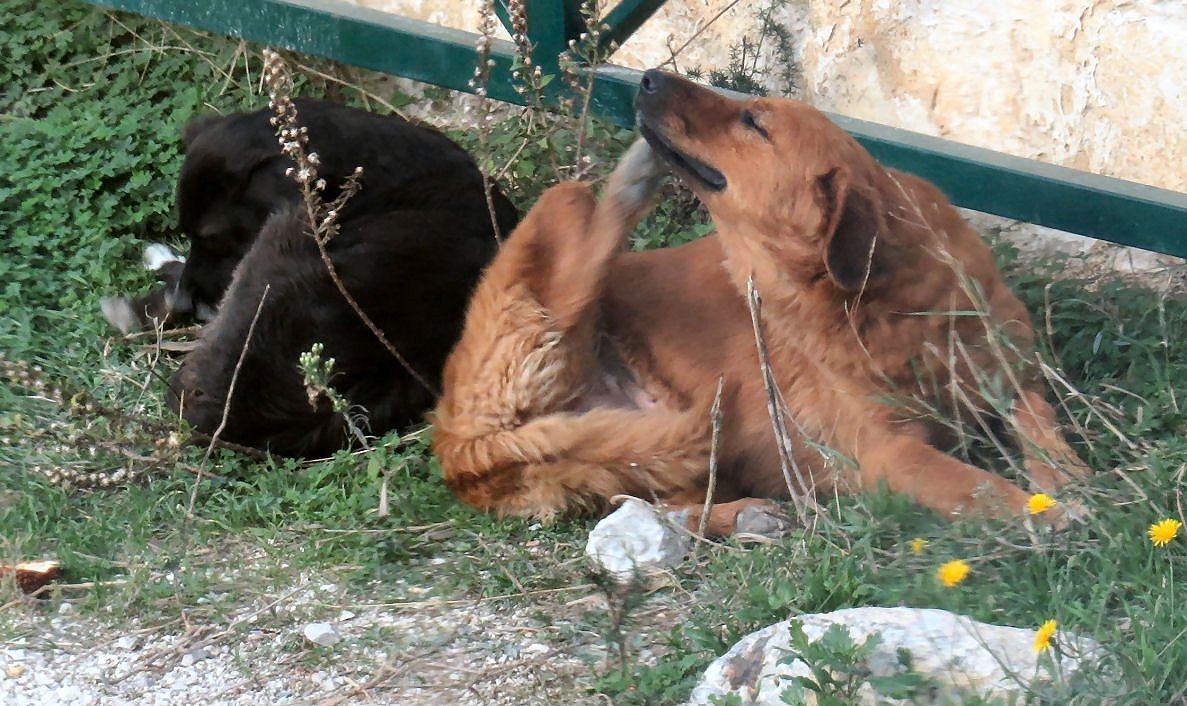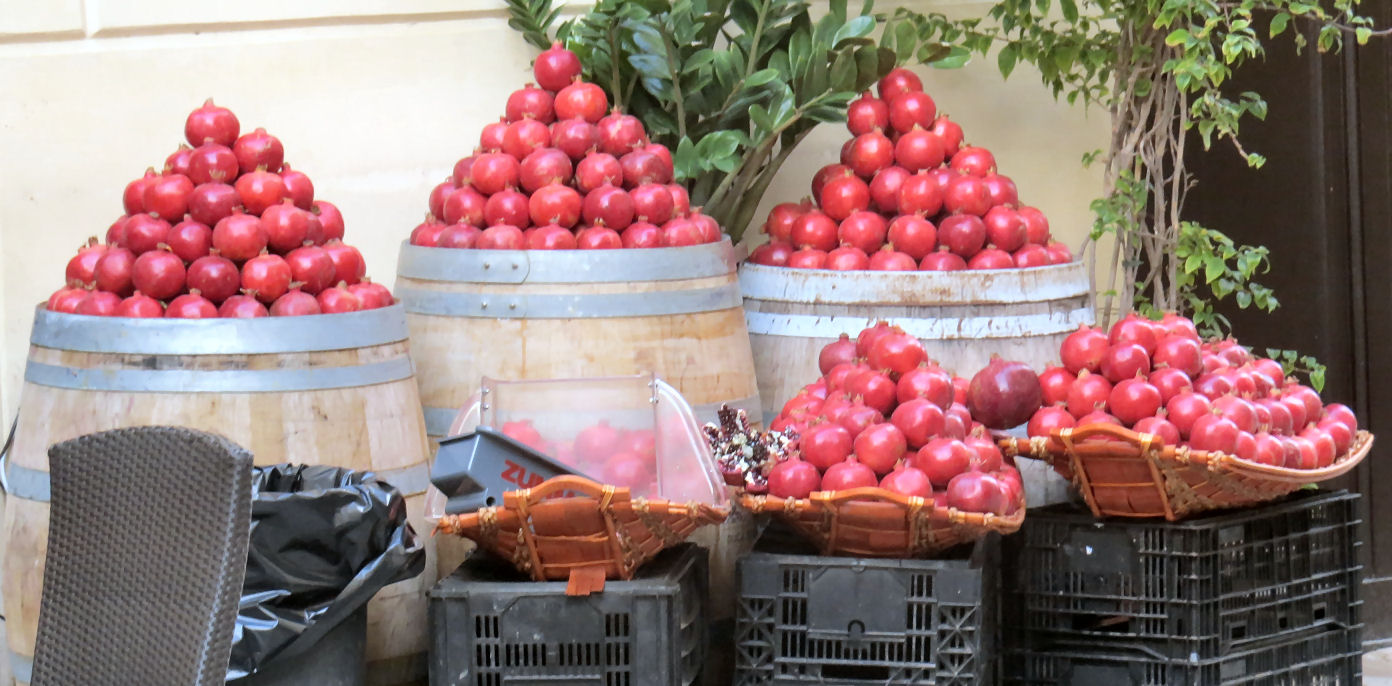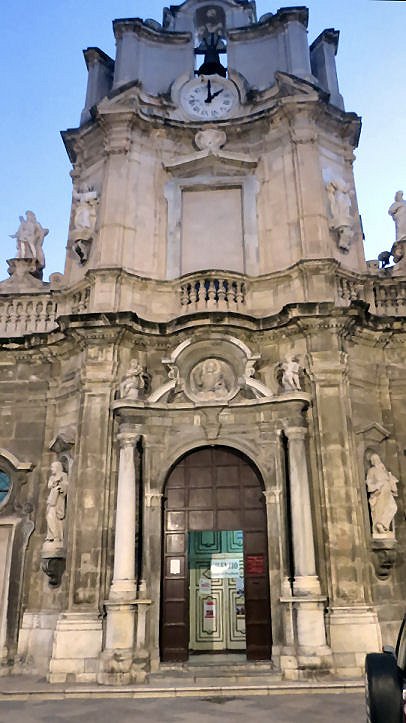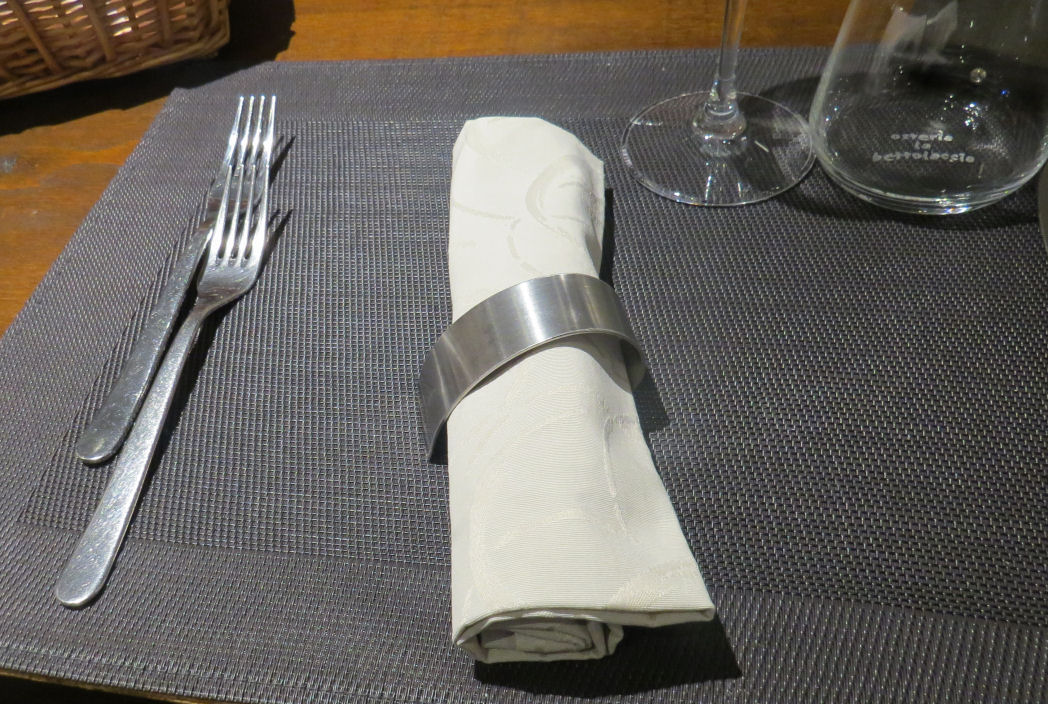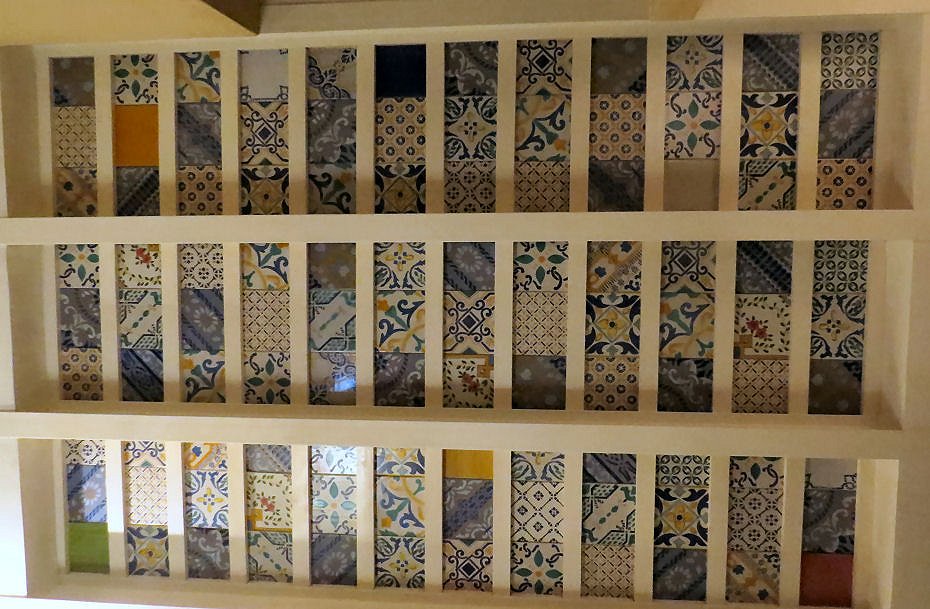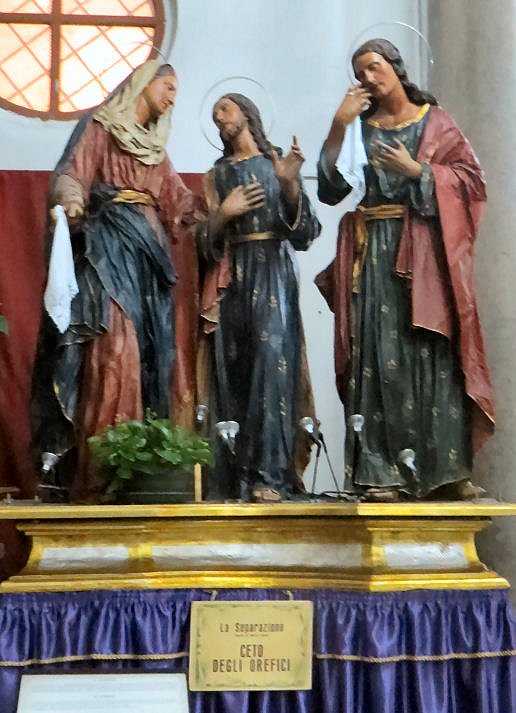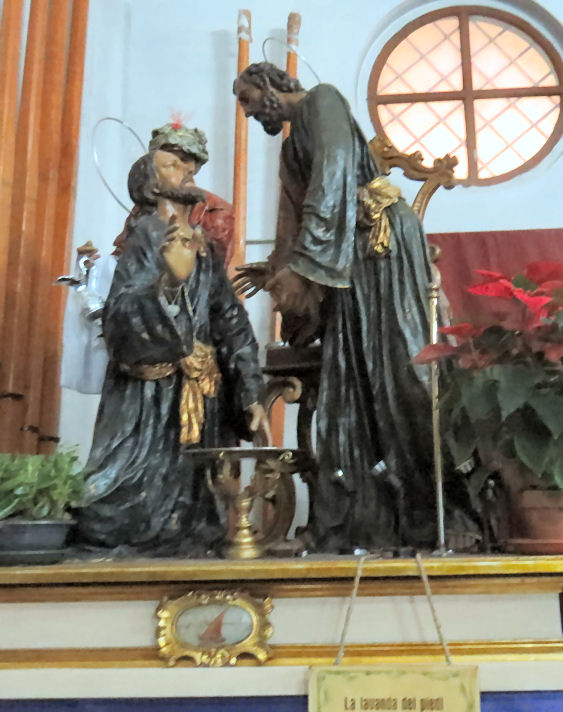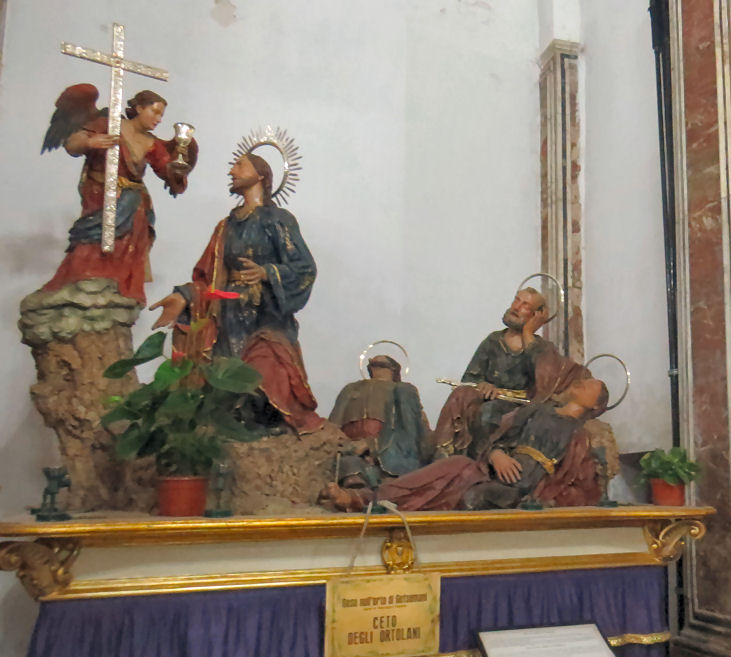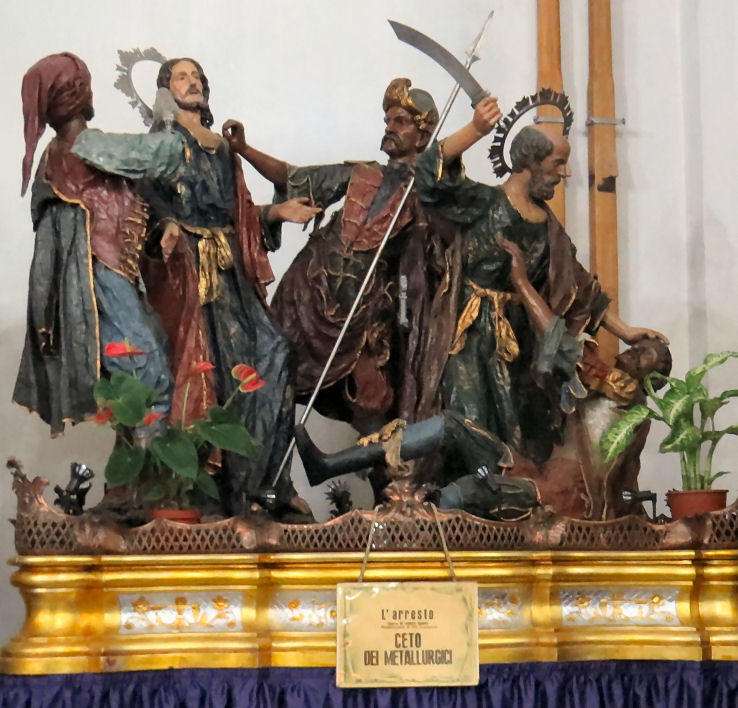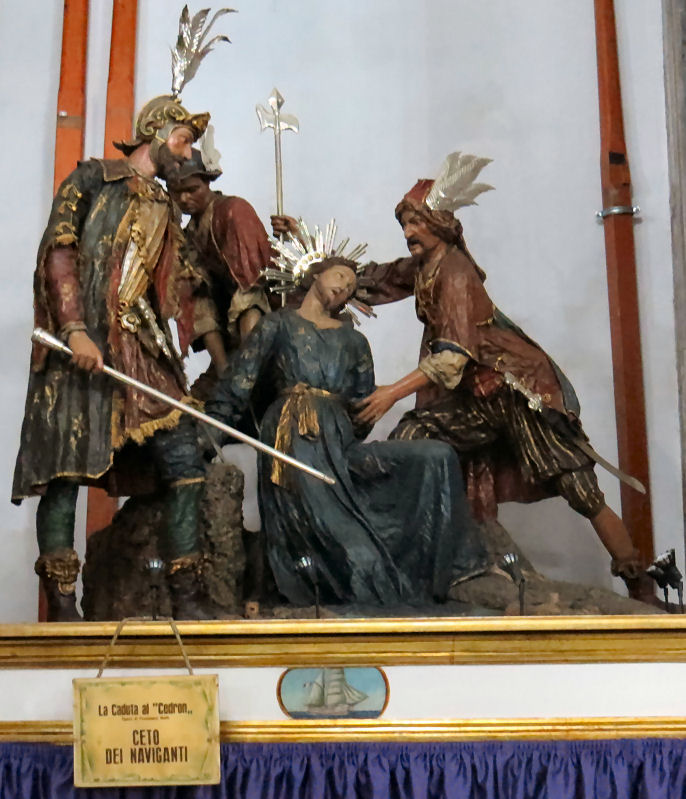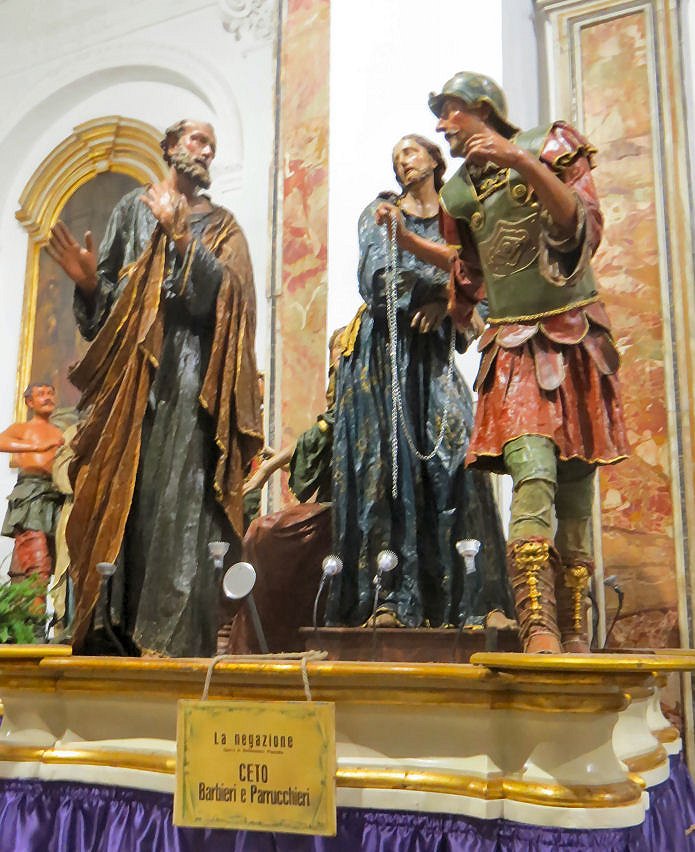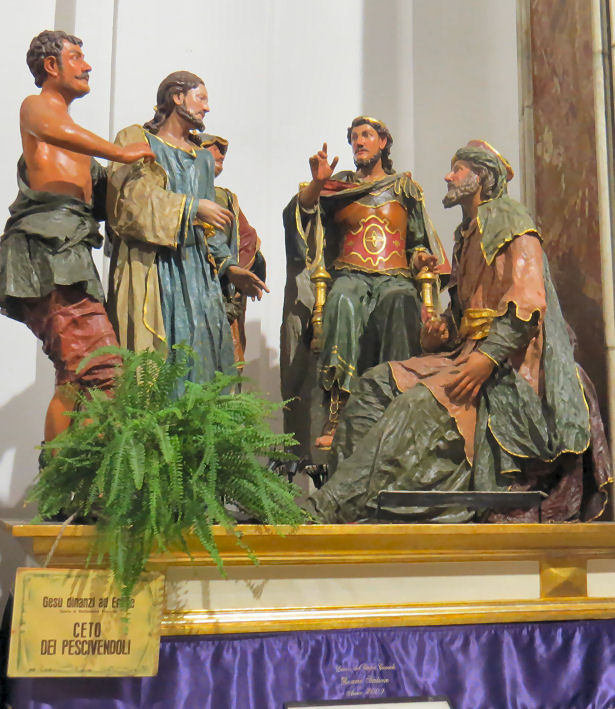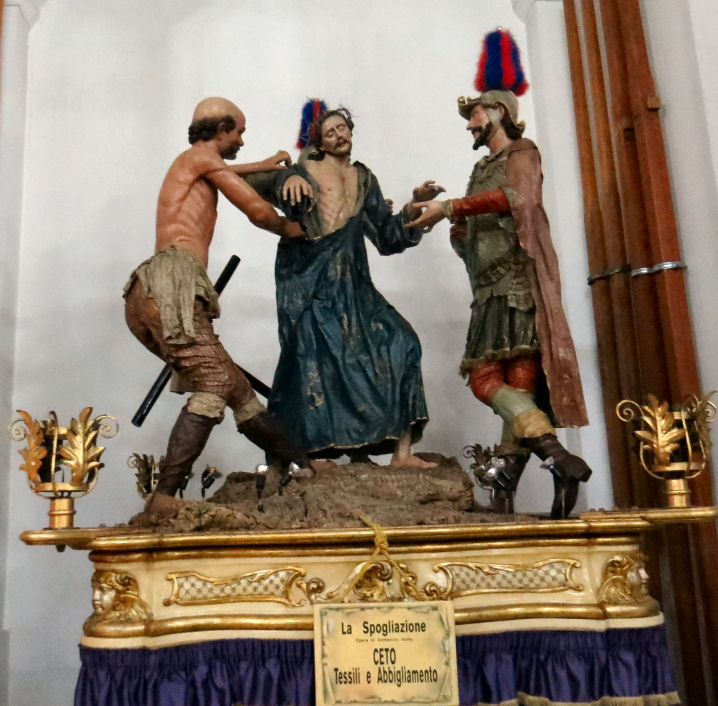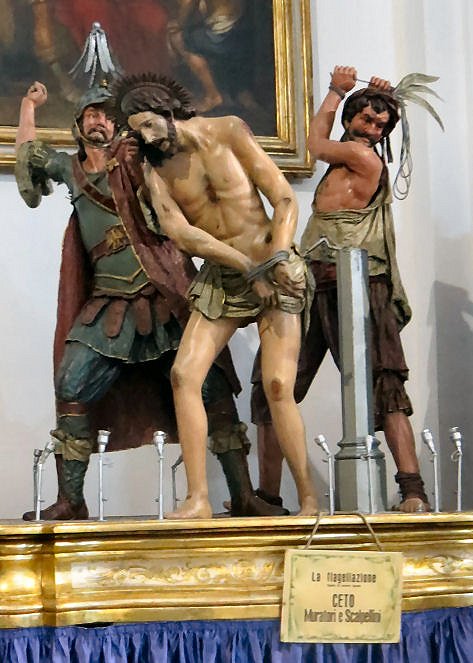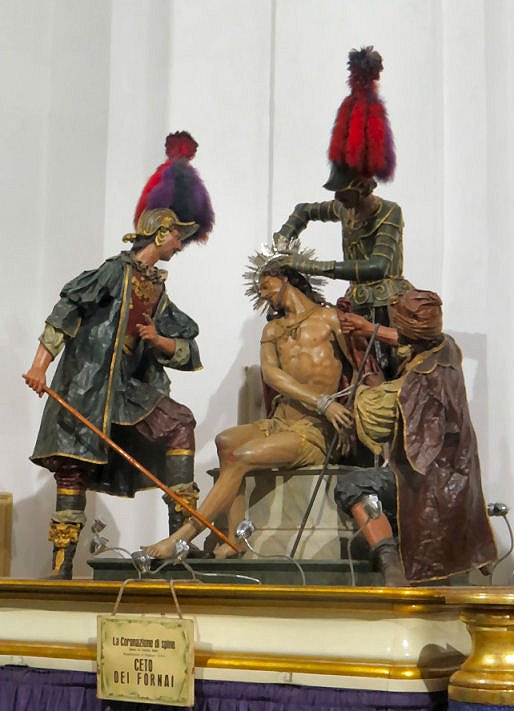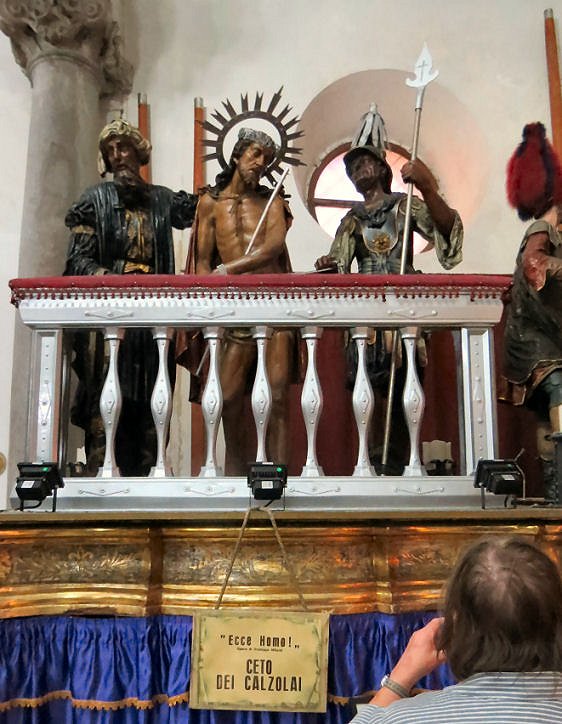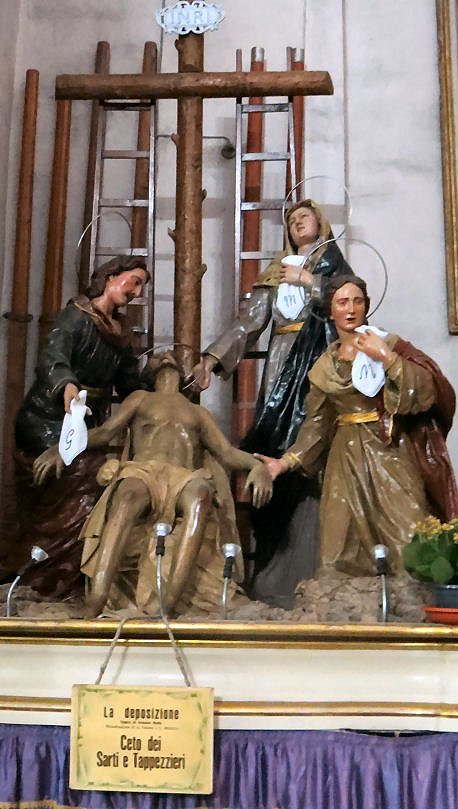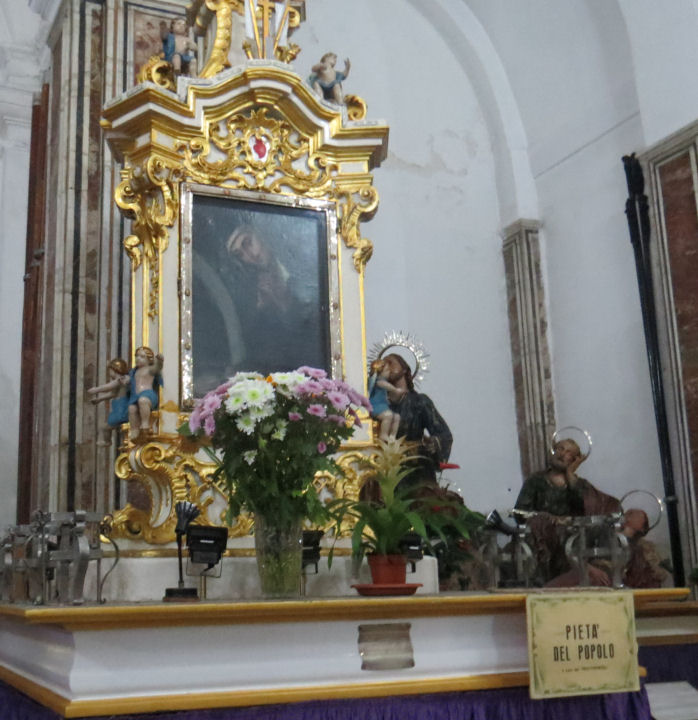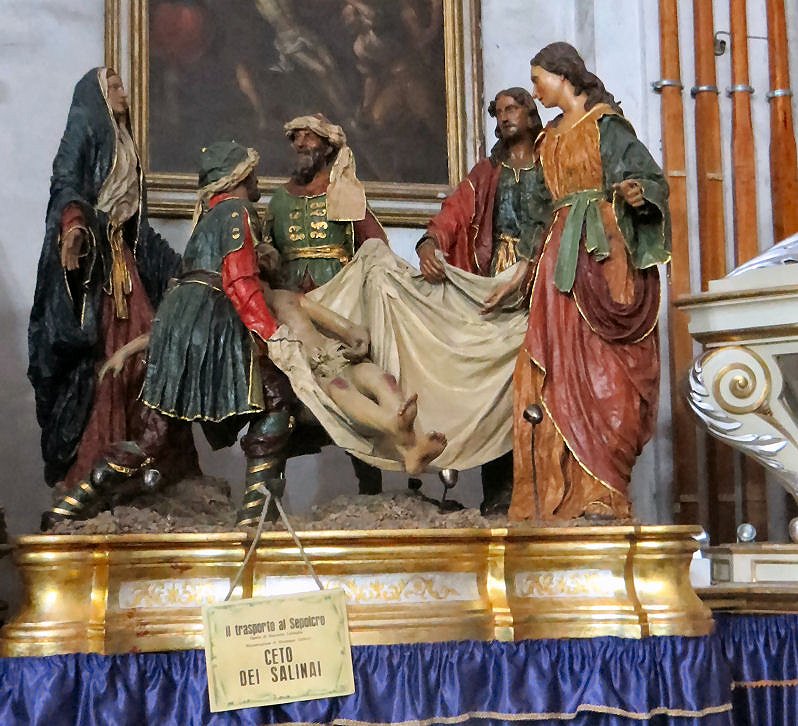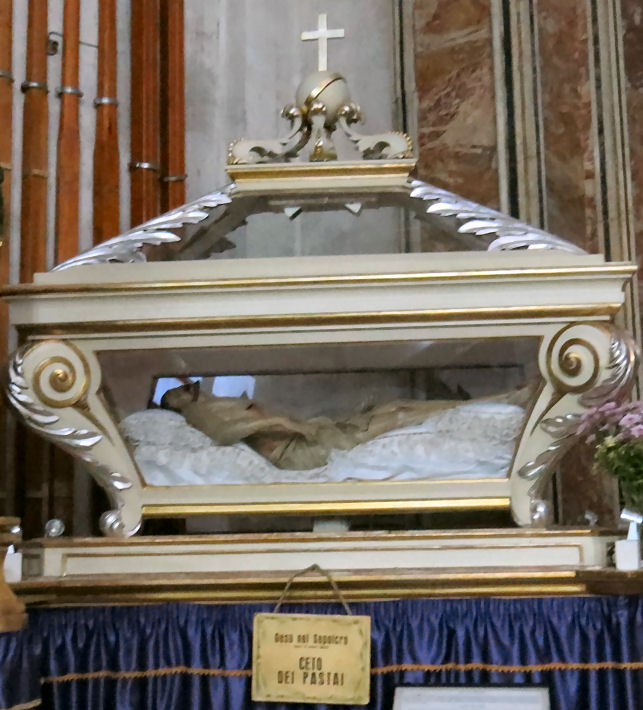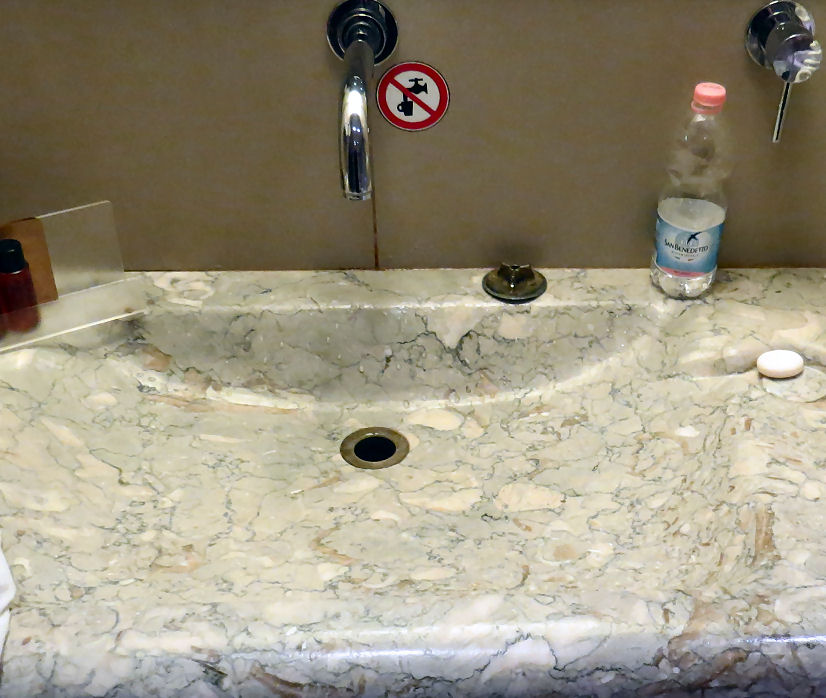
I felt fine when I woke up, but as soon as I got on my feet I began to cough, and I needed to blow my nose. It was annoying but no big deal. The nuns who taught me in grade school would have told me to offer it up.
Sue and I took the elevator up to the bar for breakfast. The coffee was self-serve, but the ladies would also fix you a cappuccino if you wished. The weather had cleared up, but there was evidence outside of the enclosed area that it had rained hard during the night.
We all met outside of the hotel's entrance. Nearby a group of young people was already assembled in the piazza. Some of them were obviously getting prepared to for a show or a concert.
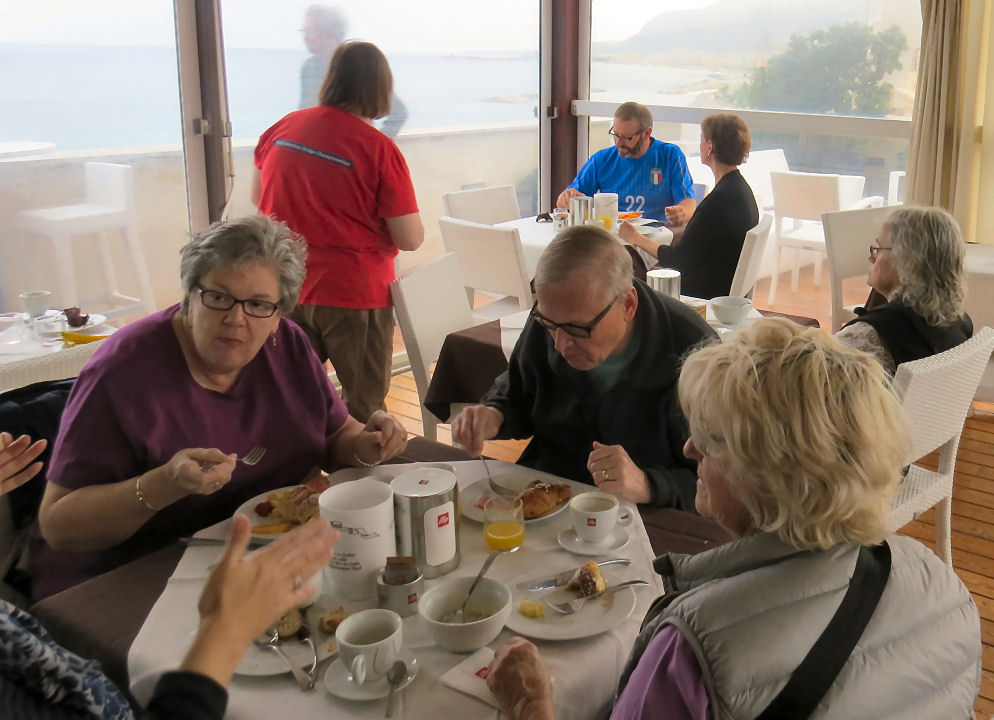
Our plan for the day was to drive to Mozia, a small island that was the home of an archaeological museum established by Giuseppe Whitaker, a member of the famous family that had garnered a fortune from the cultivating, marketing, and exporting of marsala wines in the nineteenth century. Giuseppe had moved to Sicily and collected artifacts, mostly in Mozia. The group was also scheduled to learn about the salt ponds that had been the basis of Trapani's economy for centuries.
I had no familiarity whatever with Mozia. I had heard a little bit about the salt ponds on one of my Italian tapes, but I had a hard time visualizing the process of collecting the salt as it was described, and it baffled me that any scheme that required much effort could be possibly be profitable in the twenty-first century.
Giuseppe's bus transported us along the coast from Trapani almost all the way to Marsala. During the ride Susanna surprised me by remarking that Trapani's main industry was tourism.[1] The part of the city that we had seen did not look very touristy, and, aside from the salt industry, I had never heard of any outstanding attractions. Susanna mentioned the “Egadi Islands.”[2] I had assumed that Mozia was one of them, but that was not correct. Evidently she meant that the Egadi Islands were part of what made Trapani a tourist destination.
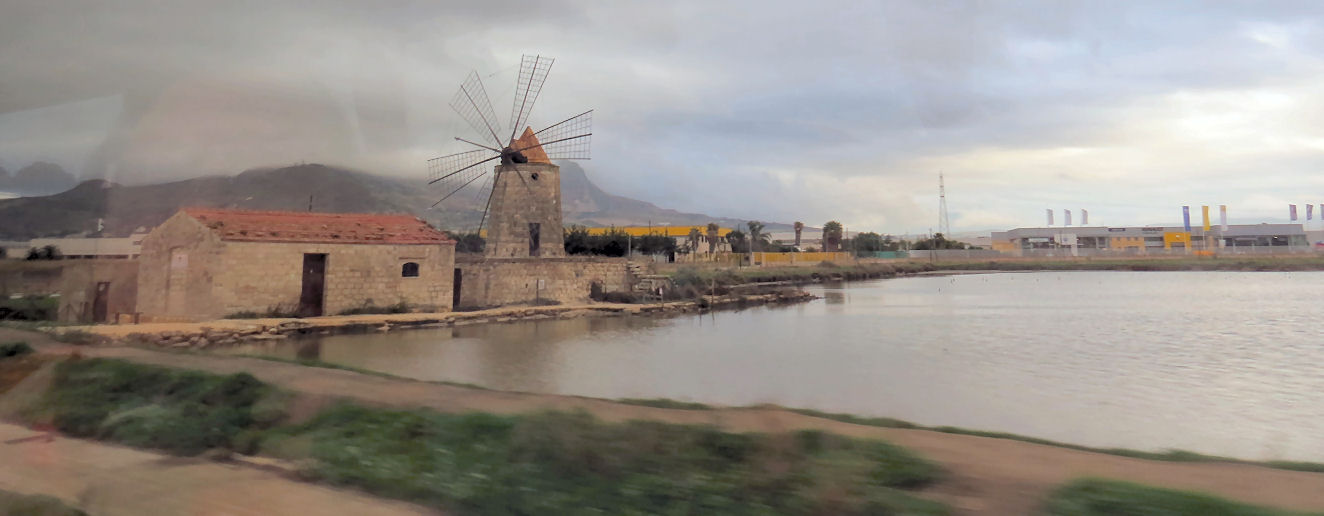
Susanna told us that there were marked differences between northern and southern Italian cuisine. Northern tastes preferred butter and rice. The south was dominated by olive oil and pasta. The people in the south used an immense amount of olive oil. Susanna said that extra virgin olive oil was the best. Virgin olive oil was all right for deep frying.
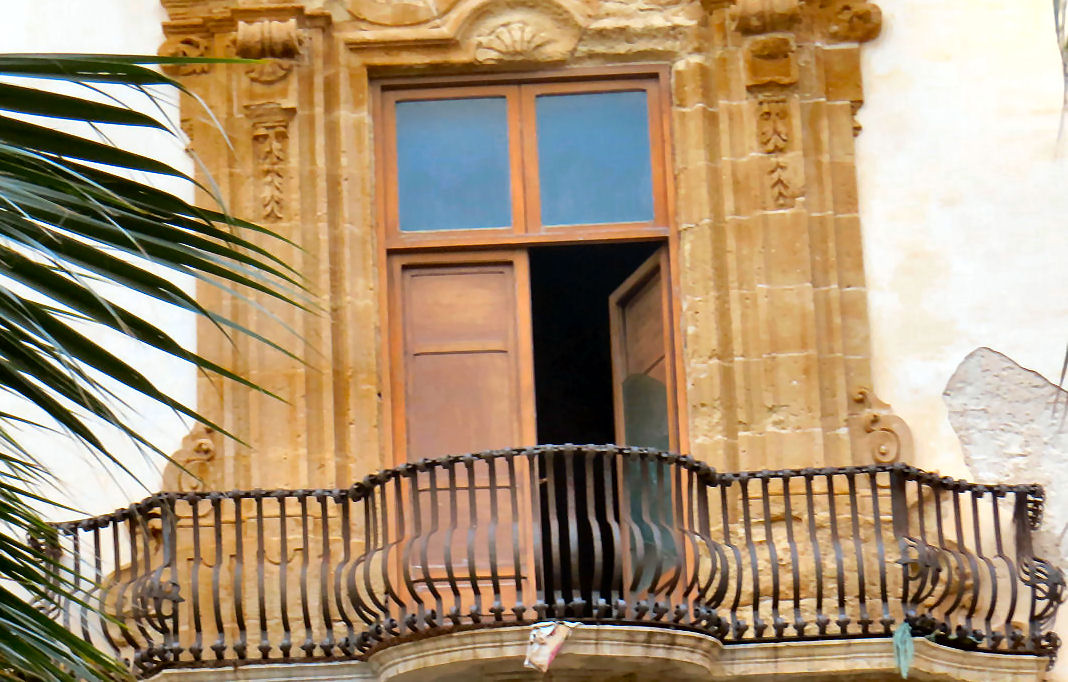
The Slow Food movement, which was very strong in Italy, has devised the term “km 0” to describe low-impact food that was grown locally. In the big cities such as Rome and Milan the food in the street markets was not necessarily grown by the person who sold it.
During the food portion of this lecture we drove through the towns of Marausa and then San Leonardo.
Susanna informed us that Mozia[3] was a very small island that was much closer to Marsala than to Trapani. It was roughly circular with a diameter of about half a mile.
Mozia was settled by the Phoenicians, who originated in the Middle East, in the eighth century BC. Their name referred to their ability to produce a highly prized purple dye. The word “Punic” was employed to refer to people who were born in a Phoenician colony. The most famous and powerful such colony was Carthage.
Over the next four hundred years Mozia gradually devolved to the Carthaginians. It was considered a very easy location to defend because of the shallow lagoon separating it from the mainland and the walls that encircled it. Nevertheless, in 397 BC, Dionysius I, the tyrant of Syracuse, conquered the island. His men slaughtered all of the inhabitants. The next year the Carthaginian General Himilcon recovered the city, but the area never regained its prominence. The Romans, who wiped Carthage off of the map at the end of the third Punic War, never settled there.
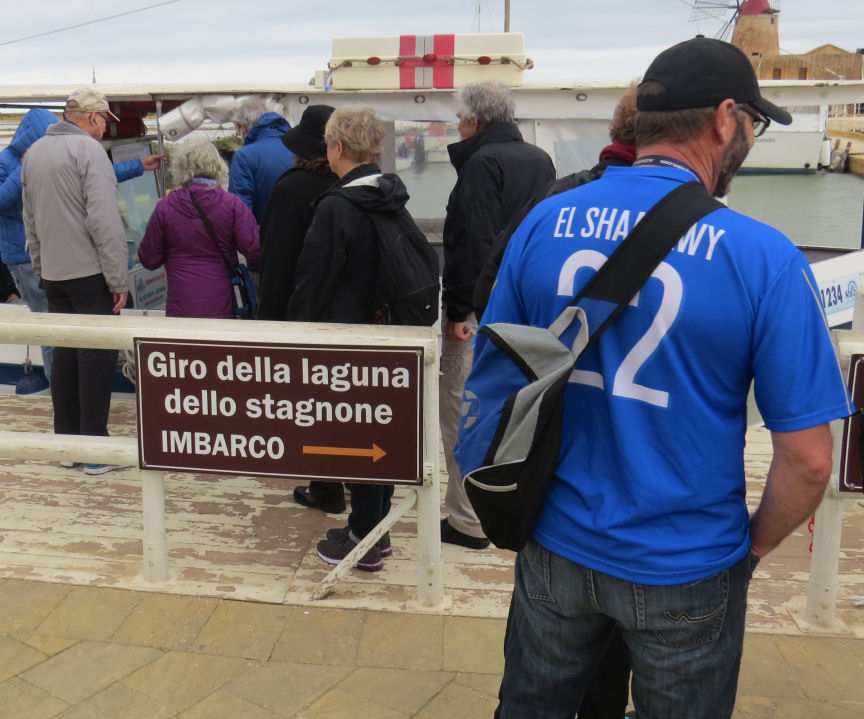
At this point the bus had reached the body of water known as Stagnone Lagoon. Inside the lagoon were four islands. Mozia, which was also sometimes called San Pantaleo, was situated closest to the shore. The largest island was Isola Grande, which marked the border of the lagoon to the west and north. North of Mozia was Santa Maria; the tiny island of La Schola lay between Mozia and Isola Grande.
From where we were standing we could actually see the city of Marsala to the south. Our guide for the morning tour was Filippa (Pina) Coppola. Boats were lined up in the harbor, but we were the only people around who could possibly have been tourists. There were large square ponds on both sides of the narrow harbor. Pina explained that in the winter the excess salt was piled up and covered with terracotta tiles to help preserve it.
We boarded the boat that would take us to Mozia. Its capacity was perhaps forty passengers. Mozia was only one kilometer away, but the trip must have taken at least fifteen minutes. The boat went very slowly, and it did not head straight to the island. Instead it went toward some red markers and then made a right turn toward the island, keeping close to the markers all the way. I deduced that the lagoon must be extremely shallow. Indeed, its depth ranged from only twenty centimeters (less than eight inches!) to one meter.
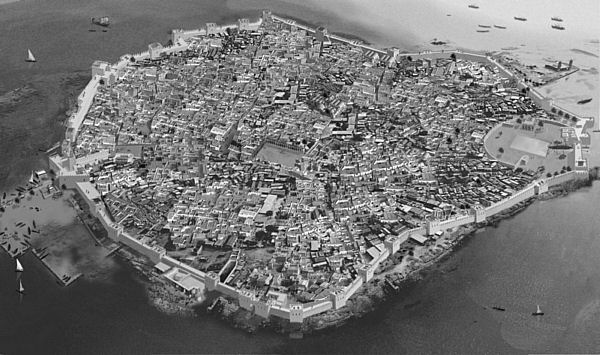
Mozia contained very little fresh water. There once was a road that allowed people to walk to the mainland without getting wet (or salty) feet. We learned that massive walls had once completely encircled the island There had been two large gates, and there may have also been side gates. Near the South Gate was a temple and a sacred pool surrounded by a semicircular wall.
Pina gave us a short history lesson about Giuseppe Whitaker and his famous relatives who had profited greatly from the marketing of marsala wines. We learned that there were several types of marsala, all of which were based on the Grillo grape. The categories were based on the number of years that the wine was aged before it was released.
The barrier island, Isola Lunga, was connected to the mainland during the conflict between Carthage and Syracuse. Nick asked Pina why the two powerful city-states had bothered to fight over this small island. She assured him that at the time possession of Mozia allowed the Carthaginians to control the sea traffic in the Sicilian Channel.
The Whitaker Museum contained a large number of artifacts that had been arranged in a much more orderly fashion than the one that we had visited in Palermo. All of them, or at least nearly all of them, came from the digs in Mozia, which were still in progress at the time of our visit.
The most famous artifact, which has been called “the most tantalizing sculpture in the entire world” by Judith Swaddling, curator of the British Museum, was the Mozia Charioteer.[4] It was a Greek statue that represented the winner of a chariot race. It dated from about 400 BC.
The conclusion that the subject was a charioteer was drawn from the long tunic and the breast belt that was typical of charioteers of the time. A great deal of the statue was missing. Part of the left hand was clearly visible on the tunic, but the rest of the left arm and all of the right arm were gone, as were the feet. Pina also claimed that he would have been wearing some sort of headgear.
Pina told us that there were approximately thirty theories about whom the statue depicted. Her favorite one was that it showed an army general from Syracuse named Gelone, who was very famous for winning a great victory over the Carthaginians at Imera and another victory at Salamina. According to Pina he also won the Olympic Games twice.
We next looked at a very unusual exhibit that deliberately mixed miscellaneous relics from ages past with pieces of plastic junk from recent times. I took a photo of a Barbie doll that had definitely seen better days.
The Phoenicians made their famous purple dye from mucus from the sea snail commonly known as murex. Pina assured us that the snails could be eaten, but no one was that hungry yet. According to Pina, the mucus was mixed with urine to produce the dye. The royal robes of the Phoenicians were dyed purple. In those days purple was definitely the new black. Among the Phoenicians the width of the purple stripe on one's robe was an indication of one's rank.
The snail's shell was also used by the Phoenicians. It was crushed and employed in mortar.
An entire room was devoted to the “Tofet” (usually spelled Tophet in English), an area on the north side of the island. The term came from a Semitic word that meant a “burning place.” It has come to mean a location where children were sacrificed. A considerable number of burnt human corpses thirteen-years old or younger were found at the Tofet. However, it was not clear whether this was an example of a human sacrifice or not.
Pina then gave us the one-minute version of the Punic Wars. The first Punic War (264-261 BC) was fought at sea and in Sicily and Africa. Both sides were damaged, but Carthage fared worse. The Second Punic War (218-201 BC) featured Hannibal winning battle after battle but never managing to conquer the Romans. Eventually he ran out of supplies, and the Romans won and imposed harsh terms. The Romans decisively won the Third Punic War (149-146 BC) and destroyed Carthage completely.
The Phoenician language had only one vowel. Rhyming must have been rather easy.
Pina said that there were seven or eight layers of tombs that spanned a period of four centuries. The “maschera sardonica” was one of the most well-preserved of the objects on display. The sculpture of two lions attacking a bull was much more difficult to interpret correctly.
The Phoenicians produced glass, but they did not know how to make it transparent. They were ignorant of the technique of glass-blowing.
We ended the tour of the museum and stepped outside to examine the dig outside that had uncovered some mosaics that were created with painted pebbles. In the thirty-five years that that they had been exposed to the elements they had faded to the extent that considerable effort was required to identify them at all. This technique was first used in Macedonia. Therefore, archaeologists had concluded that the building must be after the time of Alexander the Great in the third century BC. Pina speculated it might have been used as a public building. Perhaps the island had not been totally abandoned after the Carthaginians had been vanquished by the Roman Republic.
Giuseppe Whitaker[5] spent a lot of time in Mozia, but his primary residence was in Palermo.
The island was very near the westernmost corner of Sicily, which was only 180 kilometers east-northeast of Tunisia.
Following the tour of the museum we had a few minutes to ourselves for a bathroom break. I spent the time sitting on a bench. Something about museums in Sicily consistently tired me out. I took some photos of the bust of Giuseppe Whitaker from where I was sitting. Because I was too lazy to get up, they all had a partially obscured sign in the background.
We then walked down to the shore where the Jessica was waiting to take us back across the lagoon. A few people who were not in our group joined us for the return trip. When we had arrived back at the launch, we trooped over to the windmill/theater/gift shop to watch a short film about the elaborate process of harvesting the salt.
Many steps were involved in the process, several of which which involved pumping the water from one of the square ponds to another. Originally the windmills powered the pumps. They were later replaced by electric pumps.
For some reason the process of harvesting was seasonal. While we were there, no one was working. The movement of water from one pump to another began in early spring. The salt harvest was conducted exclusively during the summer months. Most of the work was done by burly men wielding what looked like snow shovels. They wore as little clothing as legally allowed when the heat was at its most unbearable.
I was pretty sure that I had heard that the harvest included salts other than the familiar sodium chloride. That would explain the different colors of the ponds.
The lagoon was a protected area for wildlife, especially migratory birds. Flamingos seemed to love this type of environment.
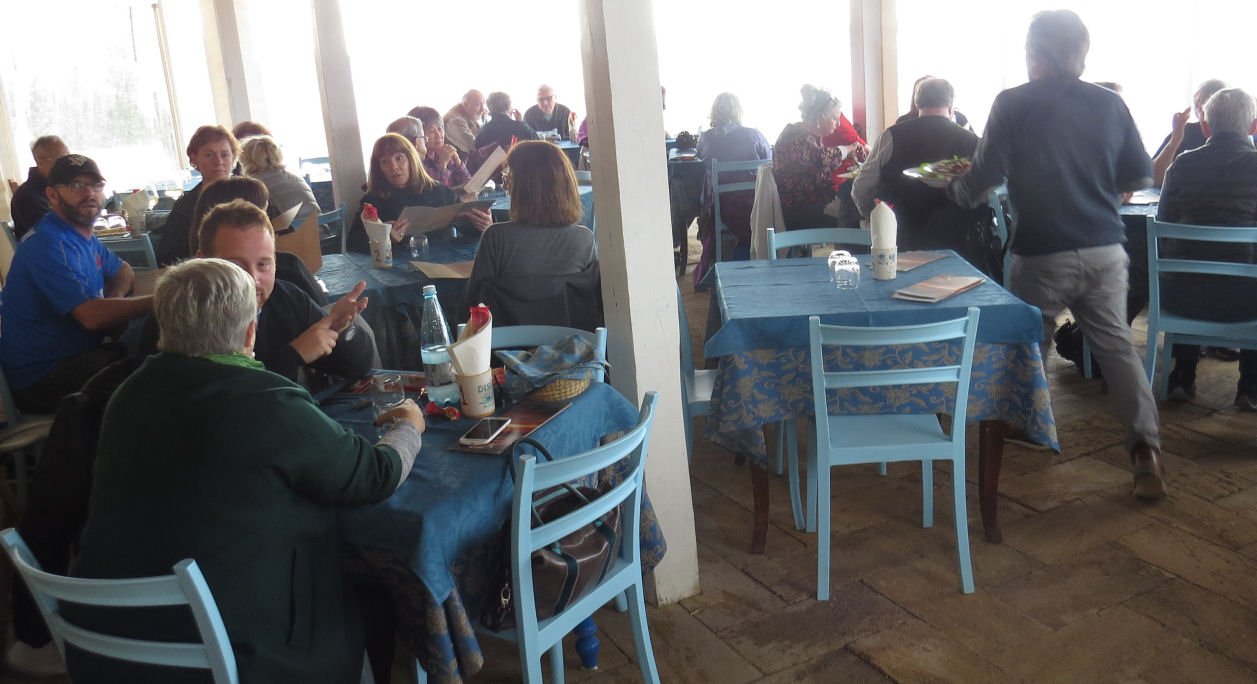
Sue and I both ordered fish couscous. I had never been crazy about couscous, but Lonely Planet insisted that everyone should try the dish in this area of Sicily. I had now tried it; I therefore feel relieved of that responsibility for the future.
The restaurant did not have the first two vegetable items that I tried to order. I settled on tomato salad, which included approximately as many tomatoes as I ordinarily consume in a year. Sue, as she often did, ordered the caprese salad. With some white wine the total bill was €50.
From the Pissaros we learned about Barbara's quest for relatives in Sicily She had learned about some cookies that formerly bore her maiden name. Evidently the cookies were still marketed, but they bore a different moniker in 2016. Nick was a computer guru and entrepreneur. He told me that for a while he tried to compete with IBM by marketing a clone for the 370. I found this astounding. He had sold one of his businesses; the company that bought him out used hundreds of people to do what he accomplished with far fewer.
I was somewhat embarrassed to respond to one of his questions about the companies that were using our system at the time that we shut the doors of our software development company, July 31, 2014. I did not know whether any of them were still using the system,[6] and I guess that it must have seemed strange that I had no curiosity whatever about the matter.
The trip back to Trapani was quiet. Susanna let everyone converse or nap. I had my neck pillow with me, but I was unable to get any shuteye.
Ann took advantage of the time to organize a group of people to eat supper at Osteria la Bettolaccia, a restaurant that was listed in the Lonely Planet book and was near the hotel. Laurie and Leslie had tried to eat there the previous evening, but they were unable to get a table. Instead they had made reservations on the spot for 9:00 on this evening.
When we reached the hotel Sue and I spent a few minutes in the room. We then planned to take a walk up to the Purgatory Church so that Sue could see the floats before the church closed its doors at 7 o'clock. As we passed the front desk we passed two sign-up sheets at the desk. The one for Bettolaccia had only six lines; the other was for a different restaurant. Evidently the hotel was unable to make a reservation for such a large number; the overflow would need to go to the other restaurant. It did not seem right that Ann, who did all the work, was not on the first list, but we added our names to the Bettolaccia list anyway.
We had enough time to look at all of the floats. None would ever be entered in the Rose Bowl parade. They were designed to be borne by six or eight men in a procession during Passion Week. Boards were inserted in brackets on the sides, and the men carried the floats on their soldiers. It soon became evident to me that the floats did not line up with the fourteen stations of the cross. In fact there were twenty floats in all. Each was evidently maintained by a separate guild. I took only one photo of each float in pretty dim light, but by some miracle my hand was steady enough that they were all identifiable.
Between the trip to the church and supper Sue and I both indulged ourselves in short naps.
Supper at the Osteria la Bettolaccia was fun. We went with P.C., Emily, and the Flowers. I had the pesto, which was tomato-based, and strasciletti di vitello a Marsala. The former was ordinary, but the latter was absolutely delicious. It was also nice to get to know some of the other members of the group a little better.
At a little before 9 o'clock Leslie and Laurie came into the restaurant. They asked us to tell them whether we liked what we ordered. I did as requested by lavishing high praise on the veal Marsala.
When we returned to the hotel, I took a shower, read a few pages from the Norwich book, and fell asleep.
Here are my photos of the exhibits in the Purgatory Church. I think that I got them in chronological order, or at least close.
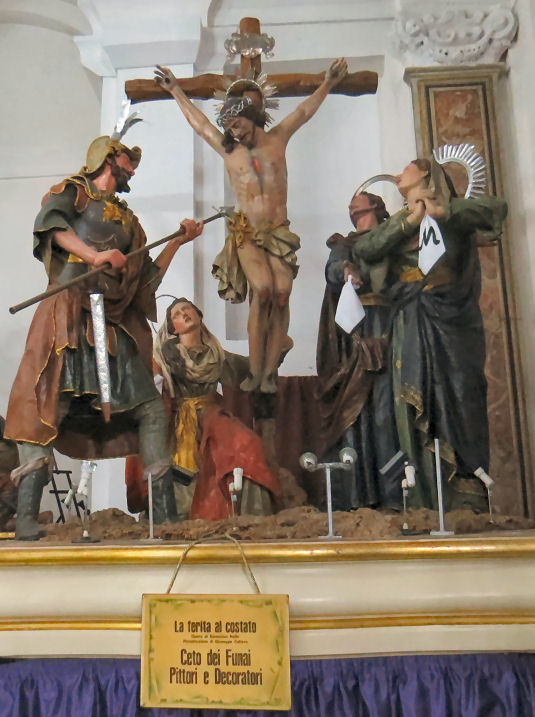 A Roman named Longinus pierced Jesus's side with a lance to make sure that he was dead. The Painters and Decorators' Guild keeps the scene alive. |
[1] The Economy section of Wikipedia's Trapani entry stated “Much of Trapani's economy still depends on the sea. Fishing and canning are the main local industries, with fishermen using the mattanza technique to catch tuna. Coral is also an important export, along with salt, marble, and marsala wine.”
[2] They are usually called the “Aegadian Islands,” in English.
[3] The most common English spelling is Motya, but everyone whom we encountered on the trip called it Mozia.
[4] This statue is often referred to as “Il Giovenetto,” which means The Little Young Man. That title did not seem at all appropriate to me.
[5] I found it strange that no Wikipedia page was dedicated to Giuseppe Whitaker, and he was not even mentioned on the one for his family. Even Itchy Brother merited a disambiguation page on Wikipedia.
[6] Called AdDept, it managed all the administrative aspects of a large retail advertising department. At the time of the company's closure it was used by Belk, Dick's Sporting Goods, Saks Fifth Avenue, and Neiman Marcus.


